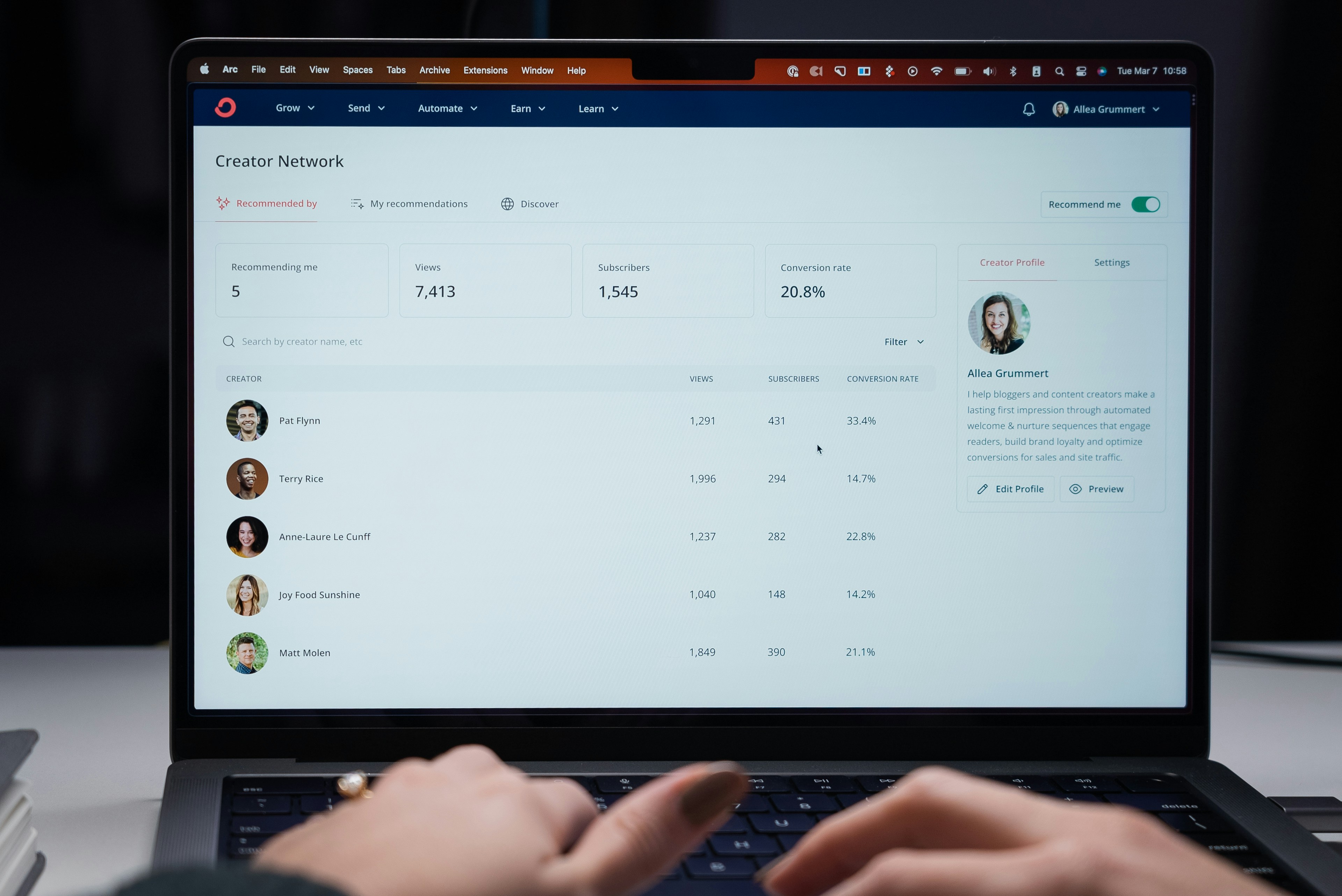Feb 24, 2025
What Is a Prospecting Email?

A prospecting email is an outreach email sent to someone you don’t know yet but hope to do business with one day. Rather than bombarding your contacts with generic promotional emails or newsletters, prospecting emails start a conversation.
Their primary goal is to introduce a product, service, or offering to potential clients or leads to spark interest and drive engagement. In this way, they might encourage action, such as booking a meeting or requesting more information.
Email Prospecting: The Process Explained
Email prospecting refers to mass email campaigns, sending emails to new prospects you don’t know yet but think could be an excellent fit for your business.
The thing about prospecting emails is that they’re not like your typical newsletter or promo blast. Nope, these bad boys are all about making a personal connection with the person on the other end. You want to show them that you’ve done your homework, know what makes them tick, and have something valuable to offer.
The Goal of Prospecting Emails
So, what’s the point of sending a prospecting email? It’s all about breaking the ice and starting a conversation. You’re introducing yourself and your business, but more importantly, you’re showing how you can help solve their problems or make their lives easier.
Maybe you’ve got a product or service that's right up their alley, or you just want to share some of your expertise and insights. Either way, it’s a way to help your prospects get to know your business better.
Why You Should Send Prospecting Emails
Here are the main reasons you want to send a prospecting email:
Get on their radar and make that first impression
Start building a relationship and show them you’re not just another random business
Demonstrate how you can add value and make their life easier
Open the door to a potential partnership or sale down the line
Stand out from the competition by being personal and relevant
The Importance of Not Being Pushy
Don’t get me wrong – it’s not about being pushy or salesy. That’s just gonna turn people off. Instead, focus on adding value and showing them how you can make their life better. Maybe you’ve got some insider tips to share or a fresh perspective on a problem they’re facing. Whatever it is, make sure it’s something they’ll care about.
How to Write a Winning Email for Your Prospects
Writing a good prospecting email doesn’t come easy. It takes practice to get it right. The steps outlined below can help you write effective prospecting emails that get responses and open the door to new opportunities.
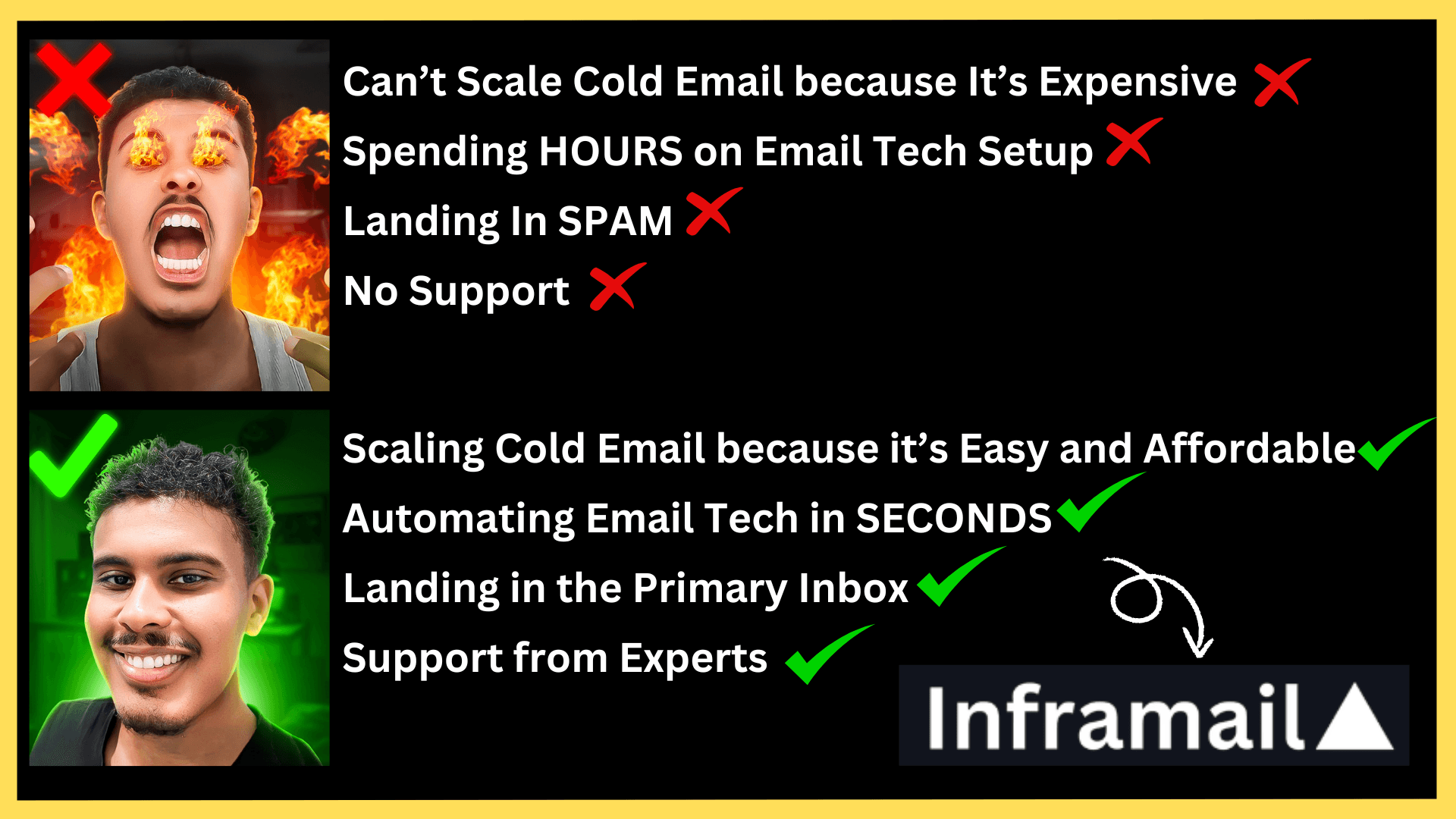
Related Reading
• Automated Lead Generation
• How to Generate B2B Leads
• How to Warm Up Email Domain
• How Many Emails Can You Send Before Considered Spam
• Best Time to Send Cold Emails
• How to Cold Email
• Best Cold Email Templates B2B
• Email Outreach Best Practices
• Email Outreach Strategy
3 Keys to Successful Prospecting Emails
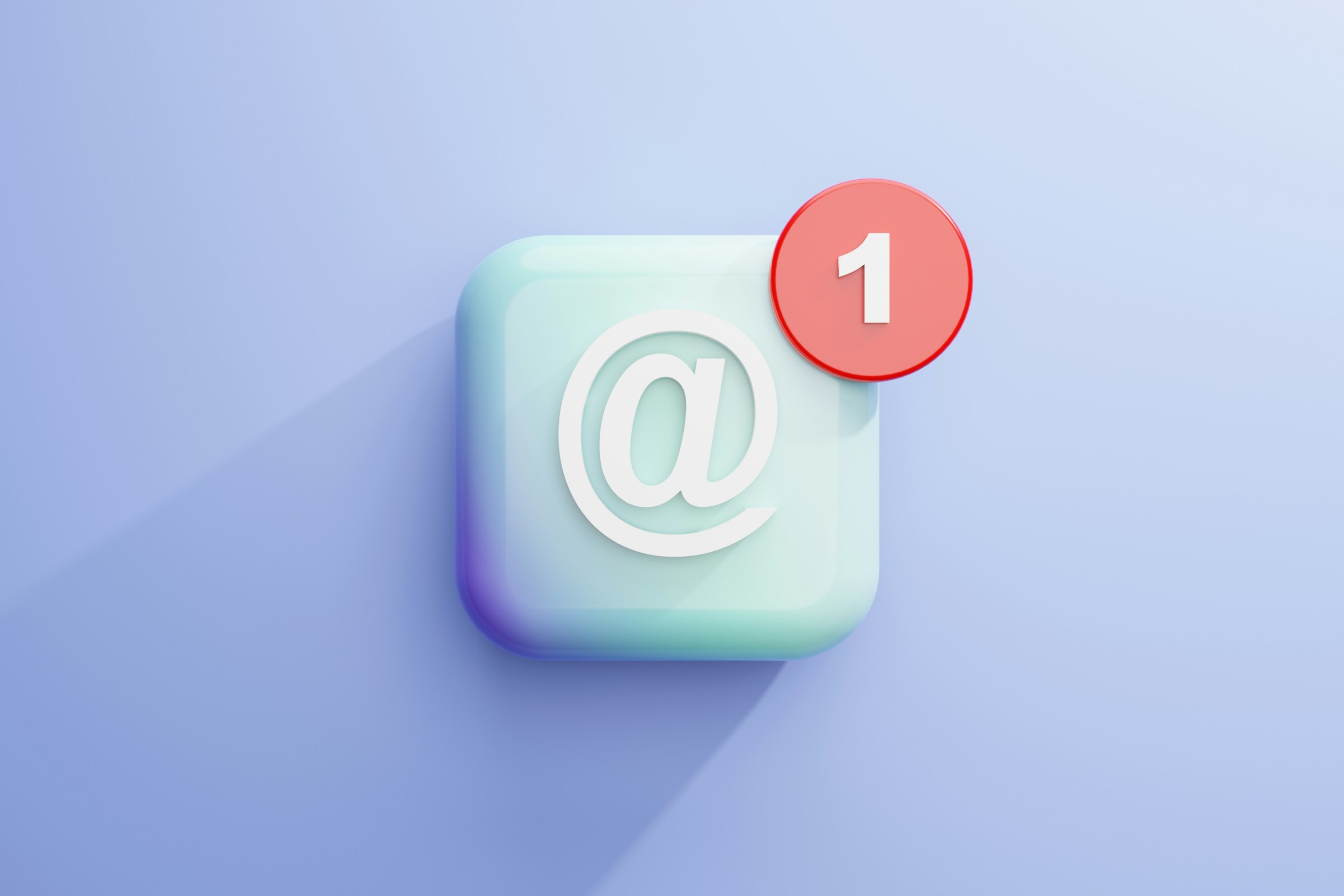
1. Craft the Perfect Email Subject Line to Boost Open Rates
The difference between a good subject line and a bad one is between an initial email that’s read and an ignored one. Talk like a real person. If a subject line sounds spam, it will be treated like spam. Be careful not to use words or phrases that often trigger a spam filter.
Best Price
Winner
Click Here
Double Your
Money Making
Why Pay More?
Using a conversational tone is another way to show you’re not a robot. No need to overdo it, but “Hey! Any time to chat about [...]?” makes for a friendlier subject line than “Requesting time to discuss [...].” Be on a first-name basis. Personalize your subject line with the prospect’s name, company name, or both when possible.
The Power of Personalization: Crafting High-Performing Email Subject Lines
Our eyes are naturally drawn to our names, making personalized subject lines stand out more than generic ones. According to Campaign Monitor, personalizing email subject lines can boost open rates by 26 percent. Keep it nice and short. Email readers focus on a brief subject line and the point. An email analysis by Leadium concluded that subject lines with no more than four words performed best. While not every subject line can be that brief, having this benchmark as a rough target is helpful. The perfect subject line should be:
Friendly
Authentic
Addressed to the prospect by name
As short as possible
2. Engage Your Audience with a Personalized Email Body
A strong subject line is the key to boosting your open rates. Getting a prospect to read your email and complete your call to action requires high-performing, strategic messaging. Make it personal. At a minimum, the body of an email should include:
The prospect’s first name
Job title
Company name
A good prospecting email should also touch on specific details of the recipient’s life. For example, to show interest, you might mention the prospect’s employer or something specific to their business. Look up news about the company or check the blog posts on their site to find a good conversation starter.
Personalized Prospecting: Leveraging Social Insights for More Engaging Outreach Emails
You could also check out a prospect’s LinkedIn profile or social media accounts. Find a way to reference their:
Alma mater
Geographic region
A mutual connection
Shared interests
Tell recipients what’s in it for them. When it comes to your pitch, don’t focus on how your product or service works. Instead, use the classic marketer WIIFM (what’s in it for me) model. Write a pitch about how that product can work for the prospect and their company. This focus makes a prospecting email feel more personalized. It also helps the potential buyer see precisely how your product would make their lives easier.
Crafting Impactful Sales Emails: Balancing Clarity, Credibility, and Conciseness
Make it clear how your product or service could specifically benefit the customer I am emailing. Instead of saying, “Our software helps large companies organize important documents,” give my reader a concrete example: “You’ll never have to waste time trying to track down missing contact info or a misplaced memo.” You could also try linking case studies in your email. Explaining how I can solve a prospect’s pain points makes my product appealing. Linking to case studies documenting similar successes gives it credibility. Hit the word count sweet spot. Like the subject line, the email’s body shouldn’t be long. But you also don’t want it to be so short that the reader lacks all the information. The key is finding that perfect “Goldilocks” length between two extremes.
Finding the Ideal Length for High-Response Prospecting Emails
A commonly quoted stat from a Boomerang study says the ideal email length is 50 to 125 words. A Prospect.io article indicates that most Boomerang users aren’t sending sales and prospecting emails. According to Prospect.io’s study, specifically on cold sales emails, the highest response rate (8 percent) was generated from emails with 1,400 to 1,500 characters. That equates to around 300 words. In short, prospects respond best to emails much shorter than the average blog but longer than the average tweet. The body of a prospecting email is where you want to connect with the prospect. Keep the length of your message manageable, and make it all about the customer.
Measure Cold Email Success to Improve Performance Over Time
The tips we’ve provided are a good starting point for prospecting emails, but you may find that some approaches work better than others. Determine the best practices for your messages by tracking their performance with software and testing. If you use a sales prospecting tool or CRM system to send your prospecting emails, you can monitor the performance of messages through the tool. And use killer email automation features.
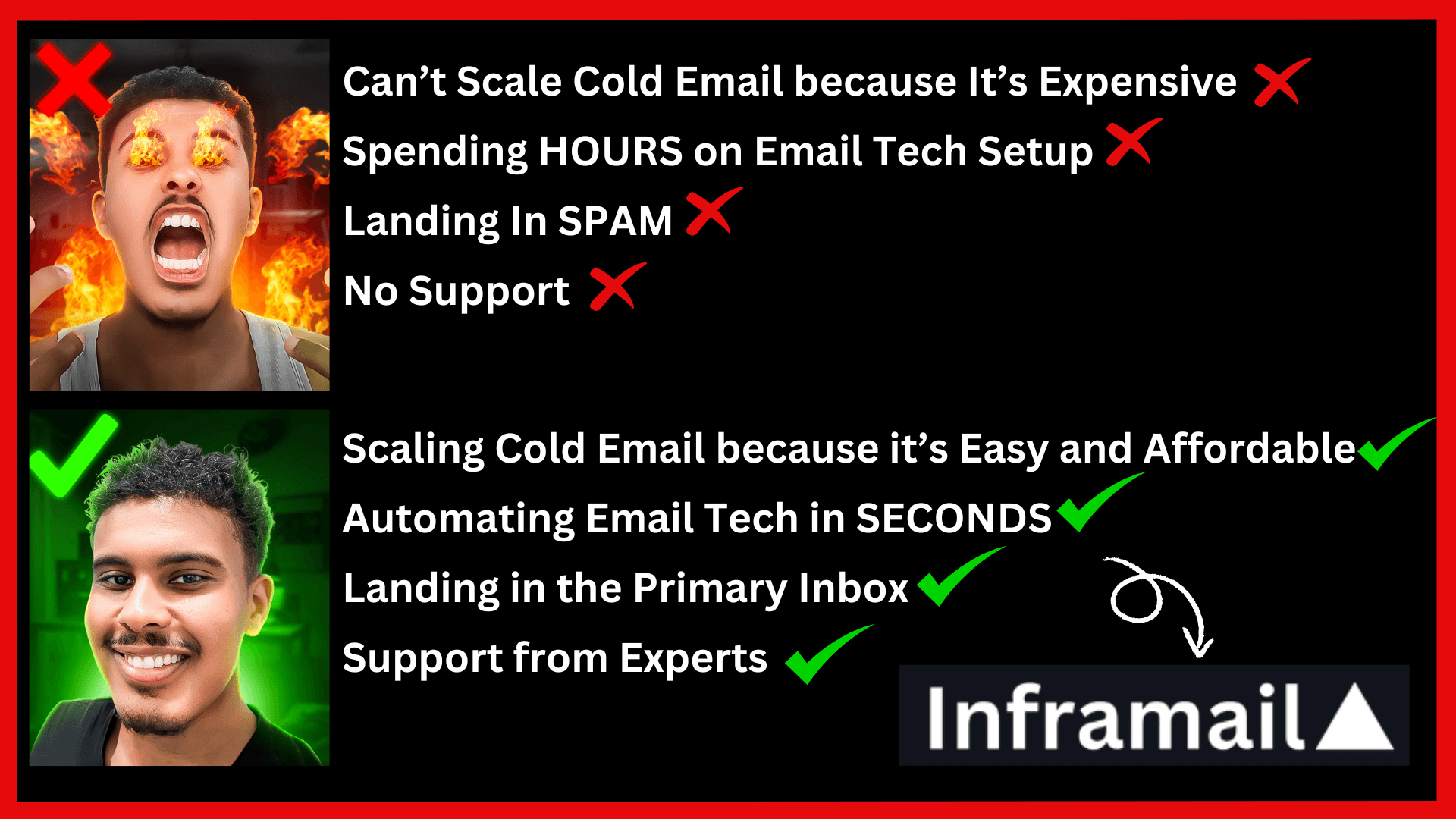
Example of both Effective and Ineffective Prospecting Emails

The Anatomy of a Failed Prospecting Email
Some prospecting emails hit the mark, while others miss entirely. Why? The first example below demonstrates an ineffective email and highlights common mistakes. Hi Kate, By now, you’ve probably heard of Connexa, our data encryption and warehousing technology, which is an indispensable part of the IT architecture of some of the largest medical institutions. Our cutting-edge solution has created a tectonic shift in the landscape of data accessibility and privacy. We store, access, and protect data so businesses can move at the speed of modern healthcare while knowing their data will never become a vulnerability.
Competing solutions require long lead times, expensive hardware, and constant troubleshooting. With Connexa, customers can be up and running in as little as 90 days. As a result, patient data can be retrieved at the pace and in the configuration professionals need to make decisions. Our multi-cloud approach offers elastic pricing to suit any level of need. We bring unparalleled accessibility to structured, unstructured, and geospatial data. Clinicians must streamline their data reporting and retrieval to refocus on the patient. Connexa is the way to do it. Let’s talk this week.
What Went Wrong?
The opening is presumptuous and puts the solution first instead of the customer.
Words like “cutting edge, tectonic, and indispensable” are all marketing speak.
The sentences and paragraphs feel disconnected from one another.
The most crucial idea doesn’t appear until the fourth paragraph.
The seller has not proven that they understand the customer.
Many of the sentences are long.
The CTA is aggressive.
The Anatomy of an Effective Prospecting Email
Now consider this revised messaging:
Hi Kate, Congratulations on the recent expansion of the West Lake Hospital network! We understand that with growth comes new challenges for clinicians who need to streamline their data reporting and retrieval to refocus on the patient. Connexa can help. We enable clinicians to store and access data faster so clinicians can spend more time improving patient health outcomes. With Connexa, hospitals benefit from quick implementation, elastic pricing, and customized data configuration.
Why it Works
The most crucial idea now appears earlier in the email.
The email cites specifics about the prospect.
The sentences are shorter.
The value of the solution is tied directly to the prospect’s world.
All marketing speak has been removed.
The three key differentiators are expressed in one sentence.
The CTA is not aggressive.

13 Golden Rules for More Effective Email Prospecting

1. Nail the Email Subject Line
You've heard me talk about subject lines before. That's because subject lines matter a lot. I don't care how much time you spend researching your prospect or channeling your inner Hemingway to pen a brilliant email. If your subject line doesn't inspire your prospect to open your email, the rest of your effort is effectively wasted. But don't take my word for it. Sixty-nine percent of email recipients say they decide if an email is spam based on the subject line alone. How to write a brilliant email subject line is an article on its own. That said, here are a few tips to consider:
Keep it short
Avoid spam words like “free” or “congrats”
Create intrigue with questions
Focus on the value to the buyer
Be unique and interesting
2. Research Your Prospect
When discussing prospecting emails, I refer to one-to-one emails—not generic sales emails sent in bulk. Before you email your prospect, you must understand their pain points and, more specifically, how your product can help them achieve their desired outcome. In other words:
Does your prospect have a reason to care about your email?
Will your email move them further away from pain and closer to pleasure?
The only way to answer these questions is to research your prospect. Now… research doesn't mean a quick LinkedIn search for generic information. Instead, try to understand your prospect's mindset. Then, they can use this information to tailor an email to their wants and needs.
3. Personalize Your Cold Emails
You've taken the time to research your prospect. Now, use this information to personalize your emails. Including your prospect's name in the email subject line improves email open rates by 10-14% across industries. Now, don't stop at the subject line. Try to say your prospect’s name naturally throughout your email copy. Add value specific to their buyer's journey. And make it obvious why I am explicitly emailing them (instead of one of the other seven billion people on the planet).
4. Keep It Short
Your prospect is busy. They don't have time to read a novella, nor do they want to. When it comes to email length, think around five sentences. (Many consider 50-125 words the golden rule.) This is your first interaction with your prospect. You just want to capture enough interest so that they take the next step. So, cut the fluff, make every word count, and always return to the question, Why should the prospect care?
Pro tip: Over 50% of people read email on their mobile devices. Before you hit send, consider how your email will look on mobile.
5. Reference a Referral
If you have a connection to your prospect, mention them. If someone referred you? Even better. You only have a few moments to capture your prospect's attention. A referral is one of the quickest ways to prove you're not just a stranger but someone your prospect might want to hear from. Try using your referral in your subject line to garner intrigue when in doubt. For example, “Mary suggested I reach out.”
6. Use the Rule of One
Have you heard of the “rule of one”? Here's the gist: Your copy should be written to one person about one thing, with one promise and one call to action. Divert from the rule of one, and you risk distracting or overwhelming your prospect with decision fatigue. If you've researched, you'll understand where your prospect is on their buyer's journey. Meet them here. Then, aim to move your buyer to the next awareness stage—that's it.
7. Include a Call to Action (CTA)
Speaking of CTAs… make sure you have one! Don't assume your prospect will know the next step to take. Instead, make it evident and effortless. That means catering your CTA to the reader. For example, if this is your first time cold emailing a prospect, they'll likely respond to a simple question, but they might not be interested in hopping on a 30-minute discovery call.
8. Use Persuasion Triggers
Persuasion triggers are psychological tactics that inspire people to take action; they move prospects closer to that resounding yes we all want to hear! Here are a few common persuasion triggers to incorporate sparingly in your prospecting emails:
Social proof: Testimonials, reviews, and social media can be helpful tools for building authority and establishing credibility.
Urgency: Why should your prospect respond to your email now, not later?
Scarcity: We all want what we can't have. If your product is fast-selling or limited, ensure your prospect knows.
Note: Scarcity tends to work best if you've already built a relationship with your prospect—aka, you've given them a reason to care.
The rule of reciprocity: Give your prospect an instant win and insane value so they feel compelled to repay your favor later. Pro tip: Influence by Dr. Robert Cialdini is the gold standard in the science of persuasion and a must-read for anyone in sales and marketing.
9. Keep It Simple
Emails written at a third-grade reading level have a 35% higher response rate than those written at a college reading level. Use simple words, short sentences, and lots of paragraph breaks. Say ThisNot ThisYou can post to 100+ job boards with one click and view all your best candidates in one place.We make it easy for you to screen and rate candidates so you can make the right hiring decisions quickly.Our platform features an innovative process for listing new openings across job boards and tagging, searching, and organizing job applications and resumes using cloud computing and decentralized information management. Candidates can be prioritized based on custom criteria and integrated seamlessly with your internal enterprise resource planning, which greatly benefits your business.
10. Use Bullets
People look at lists with bullets more often than those without (70% vs. 55%). Bullets draw the eye and capture attention. Put your most important points at the top and bottom of the bulleted list. Say ThisNot ThisSmall business owners see their top challenges as:Managing employee healthcareDealing with government regulationsDiversifying their client baseSmall business owners see their top challenges as managing employee healthcare, dealing with government regulations, and diversifying their client base.
11. Use Numerals
Digits to stop and fixate eyes when people scan text. Use numerals instead of writing out numbers (e.g., seventy-five percent becomes 75%).

12. Ask Questions
Emails that ask 1-3 questions are 50% more likely to get a response.
13. Give Them a Choice
Give recipients an out. Remind them it's ultimately their choice whether they respond or not. This compliance-gaining technique doubles the chance someone will say yes. For example:
If you'd rather not, I understand. I appreciate you reading this far.
Can you take this 5-minute survey? It is entirely up to you, but it would be valuable for us, and we'll share the results with you soon.
Your feedback on this research would be constructive, but you're free to share it with your team.
The 7 Pillars of a Successful Email Prospecting Campaign
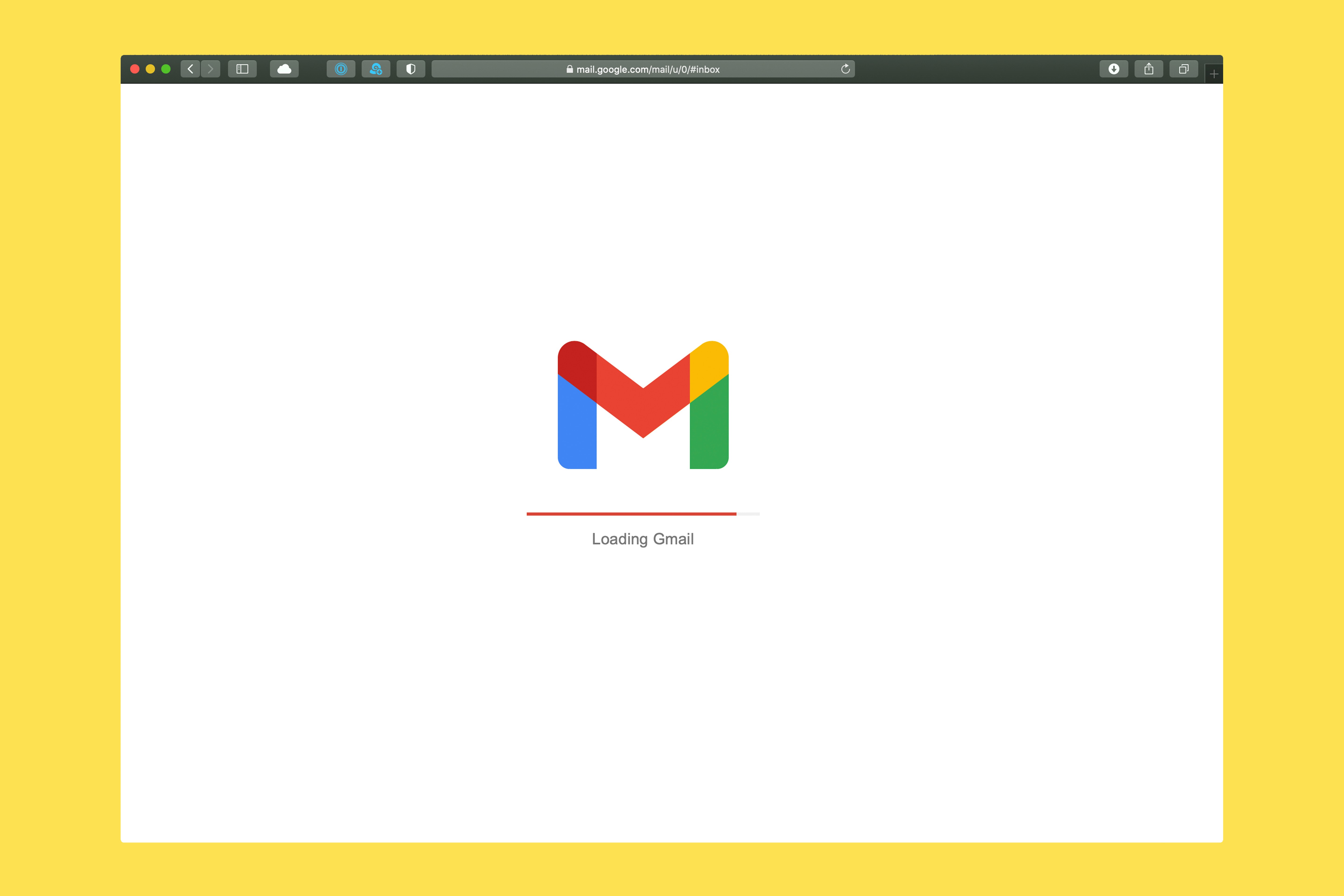
1. Audience Targeting and Finding the Right Prospects
A successful email prospecting campaign starts with identifying the right target audience. I’m talking about the people most likely to respond positively to your outreach efforts. If you’re too generic in your messaging, it won’t click. If you email the wrong people, they will ignore you or report you as spam.
So, how do you find your ideal prospects? First, you need to create a customer persona. This involves researching and outlining the traits of your ideal customers.
What makes a person want to buy your products and services?
What is it going to take to build a relationship with them?
What are their values, and what’s the best way to appeal to them with a single email (and subject line)?
Once you formally define who your target prospects are, you can start email prospecting. Just be aware that if you haven’t based your target audience decision on research and logic, it will negatively impact your strategy's other phases and elements.
2. Discovery and Contact Info Gathering: Assembling Your Lists
You must gather information and assemble lists of potential email prospects. There are many ways to do this, but there are also many ways it can go wrong—such as:
Not getting enough leads
Gathering too little information
Dealing with inaccuracies
To avoid these pitfalls, use reputable prospecting tools to help you find leads. For example, suppose you’re looking for prospects on LinkedIn. In that case, you can use tools like LinkedIn Sales Navigator, Hunter, or Snov.io to help you find leads and gather their contact information quickly and accurately.
3. Message Deliverability: Getting Past the Filters
Email prospecting doesn’t work if your messages end up somewhere in the digital ether. You have to make sure your messages are getting delivered. To do so, focus on improving your email deliverability.
Start by checking your sender score and working to improve it if it’s low.
Look for any signs that your domain or IP address is blacklisted, and take steps to rectify the situation.
Warm up your email account before sending out many prospecting emails to unknown recipients.
This process involves gradually increasing your email-sending activity to establish a positive reputation with Internet Service Providers (ISPs).
4. The Subject Line. Writing Compelling Introductions
Okay—message delivered. We’re good now, right? Wrong. The vast majority of your recipients aren’t going to open your message—unless you give them a good reason to. You need a compelling subject line or your introductory messages will fall flat.
To write a compelling subject line, keep these tips in mind:
Conciseness
Don’t make it a point to cram in as much information as possible. Instead, your subject line should be short and sweet. Limit the number of words you include and keep your message near the beginning. If that, you only have a few seconds to convince someone to open your message.
Directness
Get to the point. There’s some power in writing an ambiguous subject line, teasing your prospects with something interesting. But for the most part, it’s better to come out with what you want. Something like, “Start saving 40 minutes a day” is better than “Ever wanted more out of your day?”
Originality
You wouldn’t believe how many emails I receive that are carbon copies of emails I’ve already seen. It’s the same subject line, altered only slightly, over and over again. Don’t do this! It’s important to develop something original if you want to succeed.
Value
What does this prospect have to gain by opening your email? You have to make it worth their while. Promise them saving time or money—or let them in on some important information.
5. The Body: Writing Effective Email Copy
It’s an achievement to get someone to open your email. But you still haven’t won them over. Your next job is getting them to take action. And you do that with the body of the email.
To write an effective email body, keep these tips in mind:
Conciseness
It’s not just about the subject line! Conciseness is a valuable quality of almost any sales or marketing content. Your message needs to be short and to the point, if you want people to read it and absorb it in full.
Personalization
Personalize your message as much as possible. It’s not enough to replicate and send the same template to hundreds of people. At the very least, you should be customizing the name, the greeting, and a few details of the message to suit the individual prospect you’re trying to reach. It’ll be seen as much more relevant and much more impressive.
Conversational Nature
You can try to write a formal, polished email while prospecting; for some audiences, it might even work in your favor. But for the most part, email prospecting is easier if you maintain a conversational tone. Talk to this person in your normal voice and reach out to them the way you would a friend. It’s a quick and easy way to build rapport.
Facts/statistics
You might have impressive claims, but can you prove them? People will trust your messaging and be more likely to engage with you if you include specific facts and statistics. For example, don’t just say, “You’ll save time with our tool;” say, “Our tool saves customers an average of 2.5 hours every week.”
Clear Value
Make the value of your offer obvious. Do you want people to download an eBook? Tell them why it’s going to help them. Do you want them to sign up for a free trial of your software? Explain how it’s going to improve their life. The more specific and precise you are, the more likely I’ll be to succeed.
A Simple Next Step
Okay, so what’s next? Your email needs a call to action (CTA) and direction to some kind of next step, whether clicking a link or replying to the message. Make it obvious and push your readers to take this next step.
6. Scalability and Efficiency: Creating a Repeatable System
If you nail all the above factors, you’ll be well on your way to a successful sale. But if you want to do this efficiently and reliably, you need a repeatable, scalable system.
For example, once you define your target audience, you can create prospecting emails that can be used for any individual within that niche. You can organize your prospecting list and use an email outreach tool to send emails on your behalf. These tools can also automate follow-up messages to improve your efficiency further.
7. Measurement, Analysis, and Improvement, Optimizing Performance Over Time
You’ll probably not be very successful with your first attempt at email prospecting. Even if you follow all the “rules,” it will take some time to get to know your audience, A/B test, and find winning subject lines and email templates that convert. That’s why measuring, analyzing, and improving your work over time is super important.

Related Reading
• Best Cold Email Software
• How Long Should a Cold Email Be
• B2B Cold Email Response Rates
• How to Improve Email Deliverability
• Unlimited Email Hosting
• Email Testing Tools
• Best Email Deliverability Tools
• Sales Email Automation Tools
• Email Scraping Tools
• Best Sales Prospecting Tools
• Email Warm Up Tools
• Email Personalization Tools
• Mailscale Alternatives
• Mailforge Alternatives
27 Best Cold Email Outreach Tools
1. Inframail: The Future of Cold Email Infrastructure
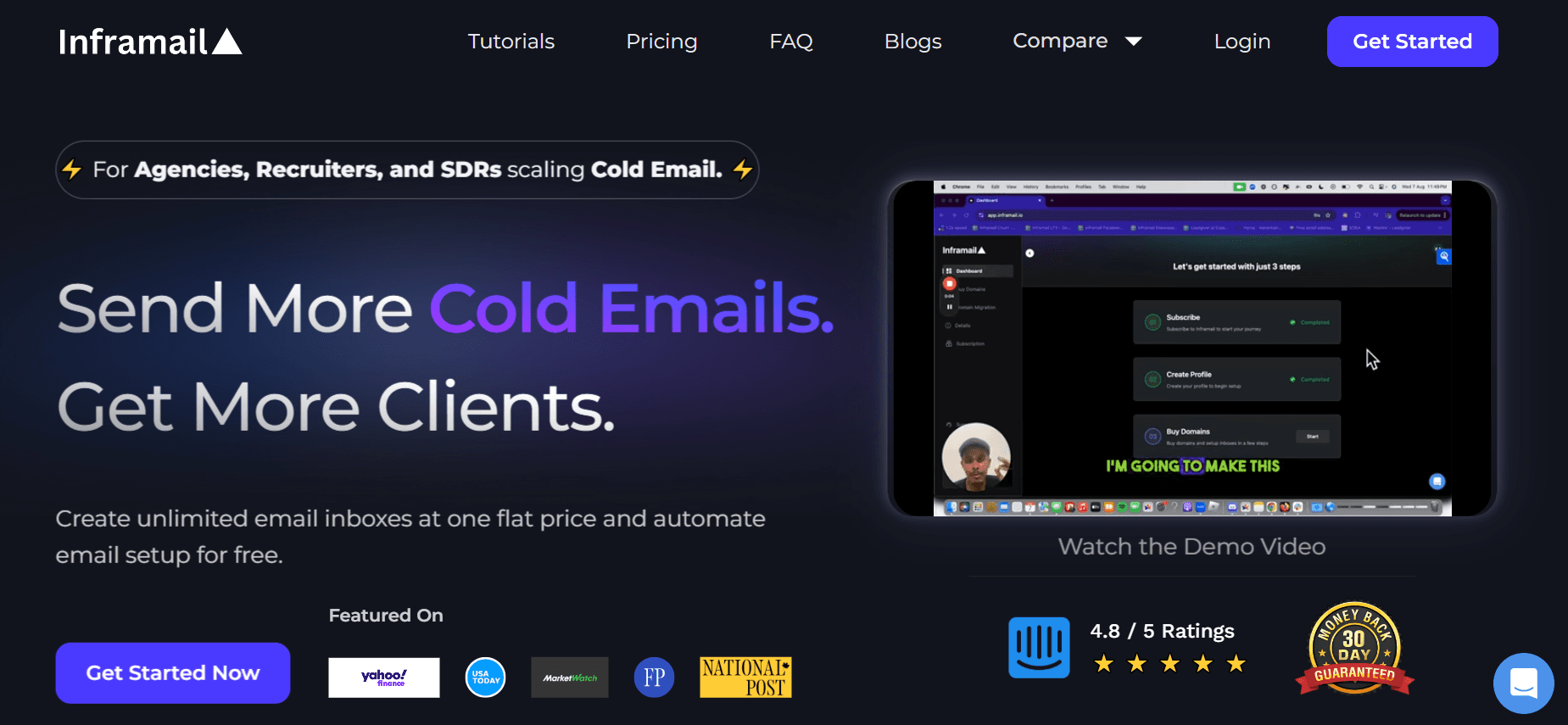
At Inframail, we are revolutionizing cold email infrastructure with unlimited inboxes at a flat rate.
We provide:
Microsoft-backed deliverability
Dedicated IP addresses
Automated technical setup
This helps customer outreach efforts efficiently like:
Agencies
Recruiters
SDRs
The main benefits of using our service:
Automated SPF, DKIM, and DMARC setup
Dedicated email servers for each user
16-hour priority support daily
Unlike traditional providers that charge per inbox and leave you wrestling with technical configurations, Inframail streamlines the entire process. We handle the complex infrastructure setup while you focus on reaching more prospects.
InfraMail provides the robust email infrastructure you need without the usual technical headaches and per-inbox costs, whether you're:
An agency looking to scale outreach
A recruiter connecting with candidates
An SDR driving sales
Start buying domains now and set up your email infrastructure today with our email infrastructure tool.
2. Close: Smart Email Automation for Growing Teams
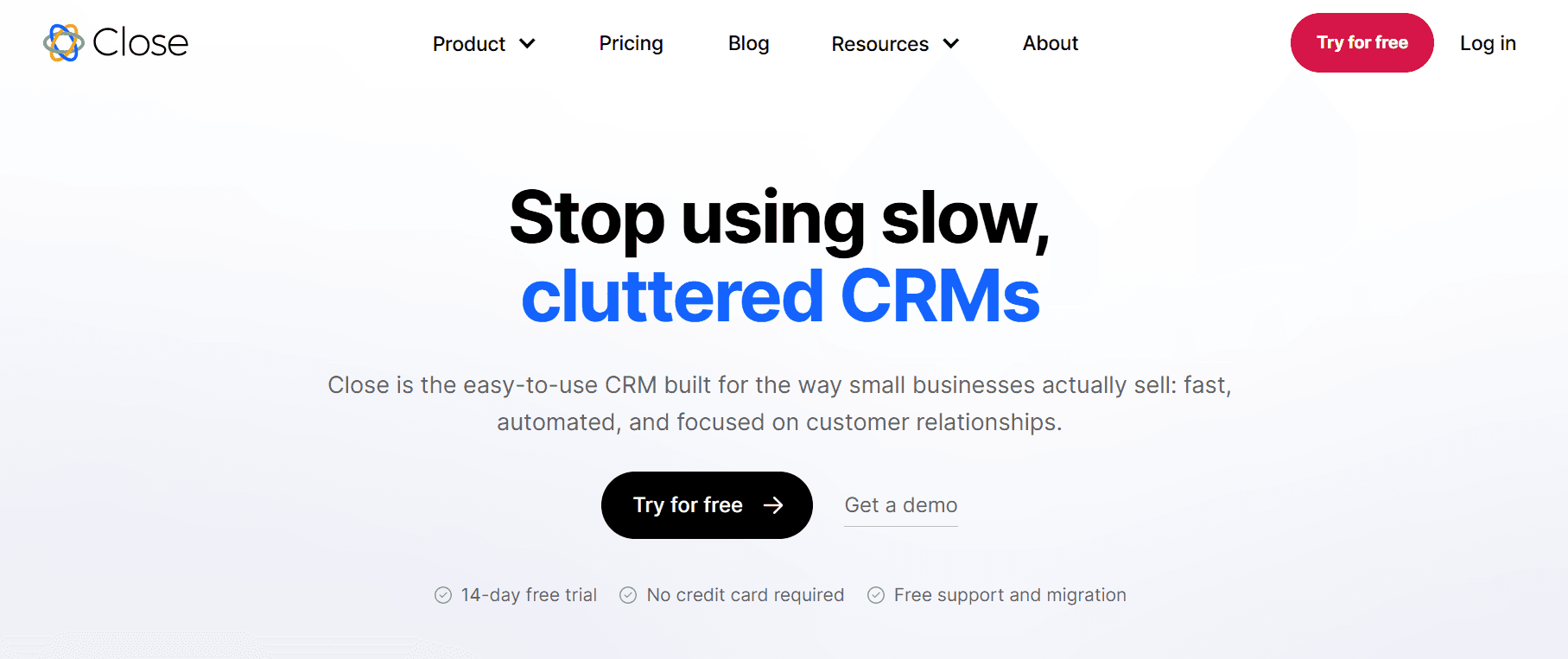
Best for:
Growing teams and small businesses that want to combine
CRM and cold emailing under one roof. 6,500+ happy customers agree
Close is a powerful CRM software worth looking at.
Close comes with advanced cold email automation options that save you time and help you reach more prospects.
With our Smart Views, you’ll build segmented contact lists that you can later put into Workflows.
A Workflow can also include calls, SMS, and tasks to add more touchpoints to your emailing efforts. With its user-friendly interface and various options to manage and engage leads, you’ll improve your cold outreach campaigns and drive more sales.
3. Outreach: The Best Cold Email Tool for Enterprise Businesses
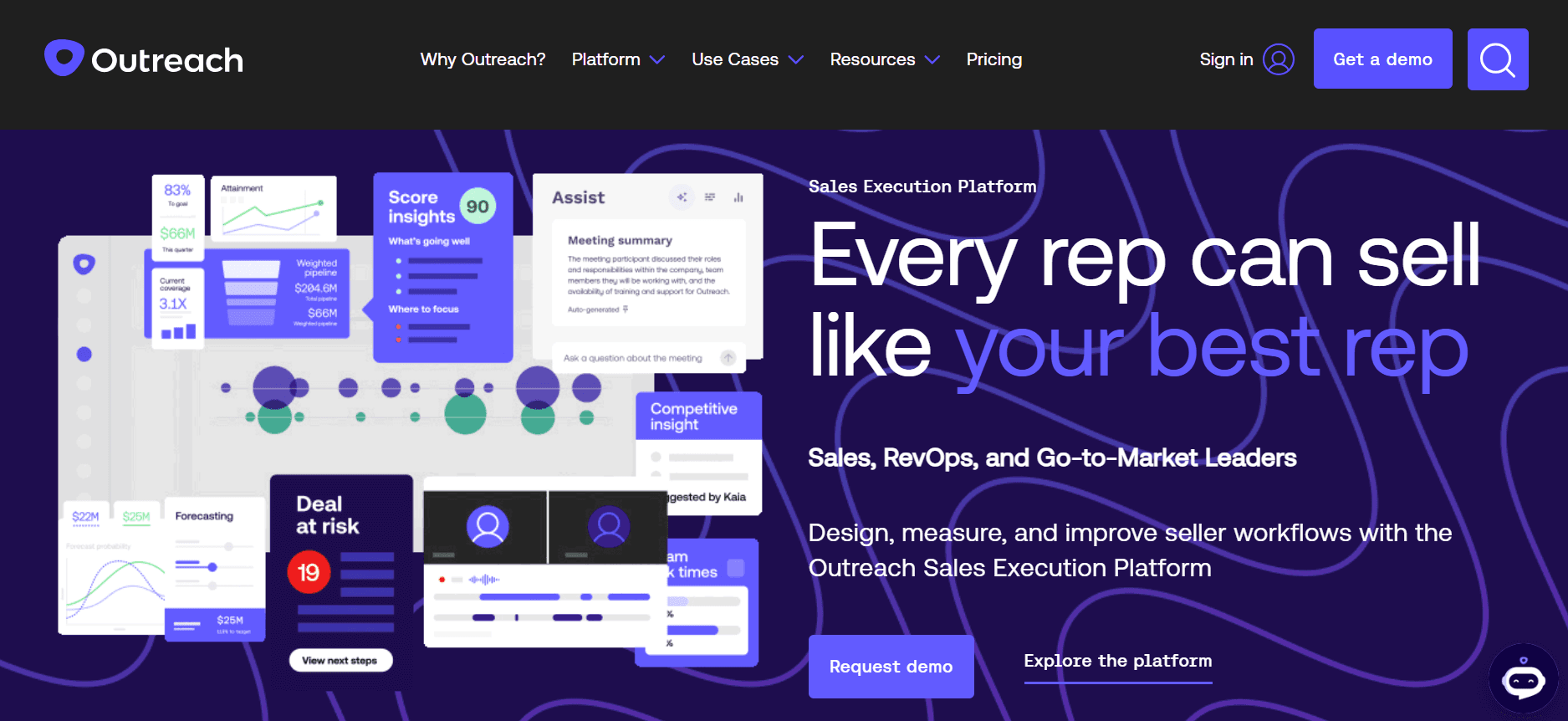
Best for:
Big corporations that want to unlock seller productivity and make sales teams efficient.
Outreach is best for enterprise-level companies that need a sales engagement platform.
The tool combines CRM, sales forecasting, conversation intelligence, and sales coaching (among other aspects).
On top of their CRM, they offer advanced features for emailing:
Sequencing
Email templates
Reply rate tracking
Advanced analytics.
4. Smartlead.ai: AI for Cold Email Deliverability
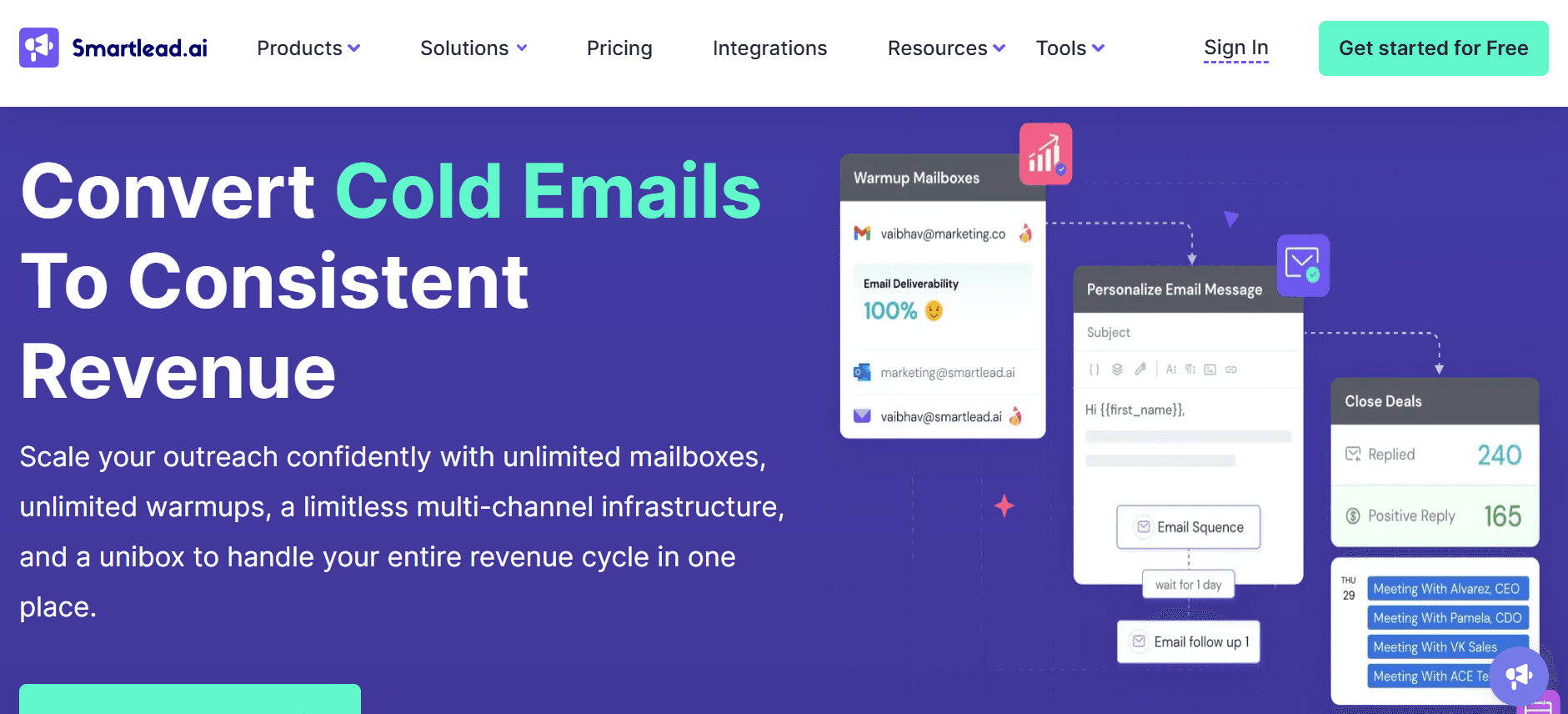
Best for:
Small businesses that want to improve cold email deliverability and warmup email accounts.
Smartlead.ai is a modern cold email software that uses AI to optimize email deliverability and help warm up email accounts.
Thanks to Smartlead, you can improve your sender's reputation and email engagement.
As a result, cold outreach campaigns should reach your recipients' main inbox more often (instead of landing in a spam folder).
5. Mailshake: The Cold Email Tool for Personalization and A/B Testing
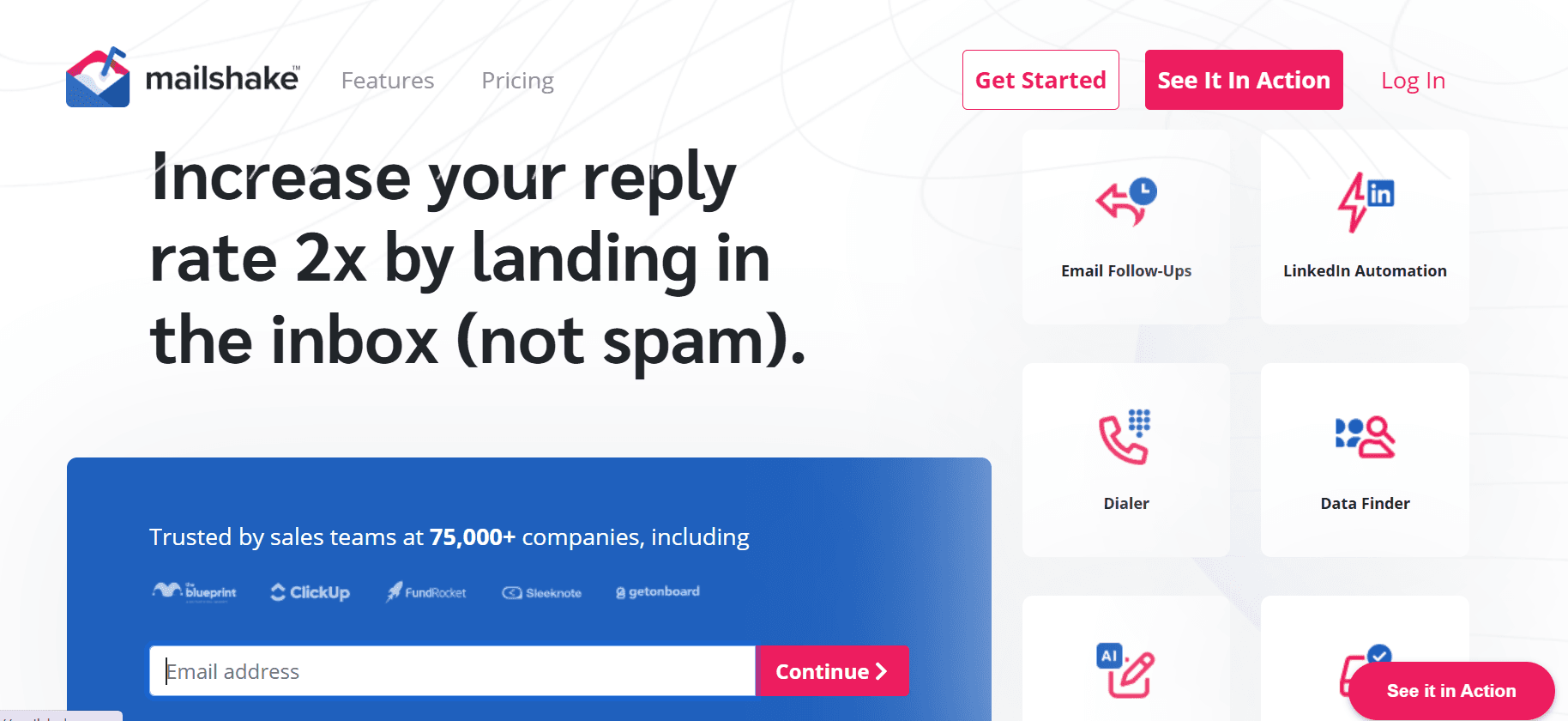
Best for:
Salespeople and marketers who want to improve their email outreach and cold emailing campaigns.
Mailshake is an easy-to-use tool that offers advanced cold emailing features. Its personalization, A/B testing, and automated follow-ups are designed to help you improve your outreach activities. The tool can pause a sequence when a prospect replies, unsubscribes, or bounces. With a customizable sending schedule, you can improve response rates, and with native integrations, your leads land in your CRM.
6. Mixmax: Cold Email Automation Inside Gmail
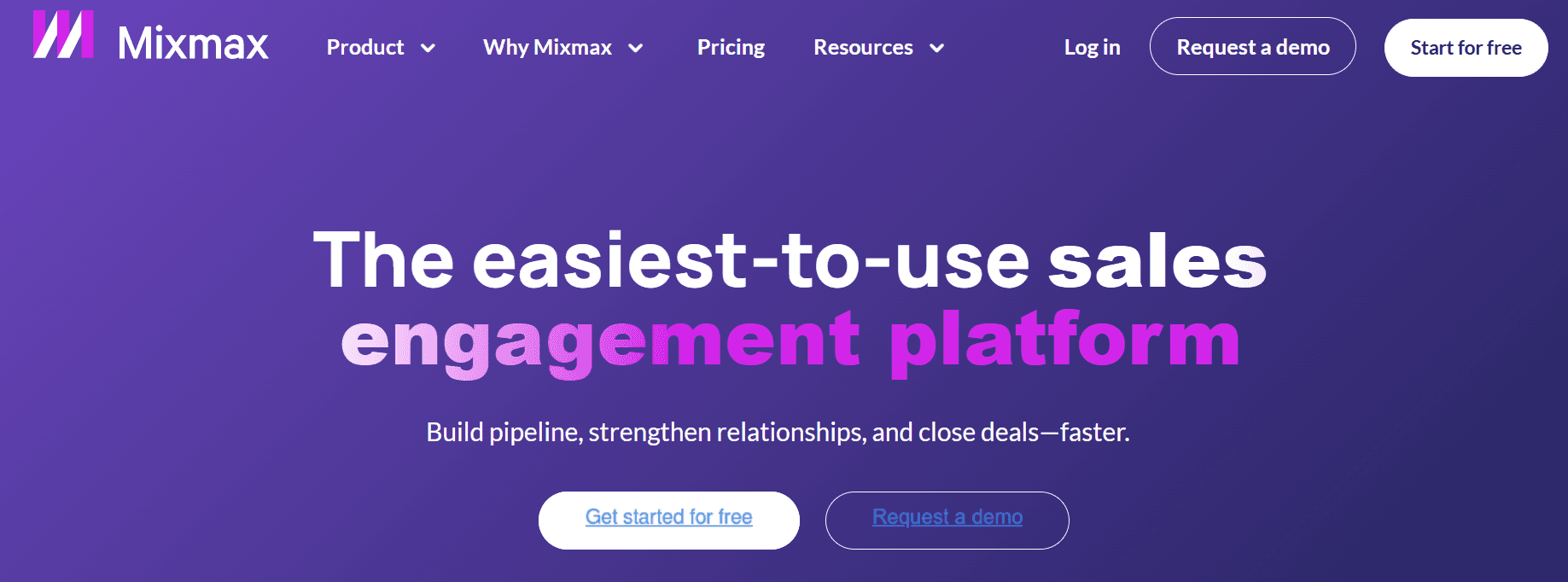
Best for: Mixmax is a solid cold emailing software with automation and scheduling capabilities. Sales, customer success, and account execs can send personalized:
Emails
Track engagement
Automate follow-ups.
You can do it all from within your Gmail inbox.
7. Drip: The Best Cold Email Tool for E-Commerce
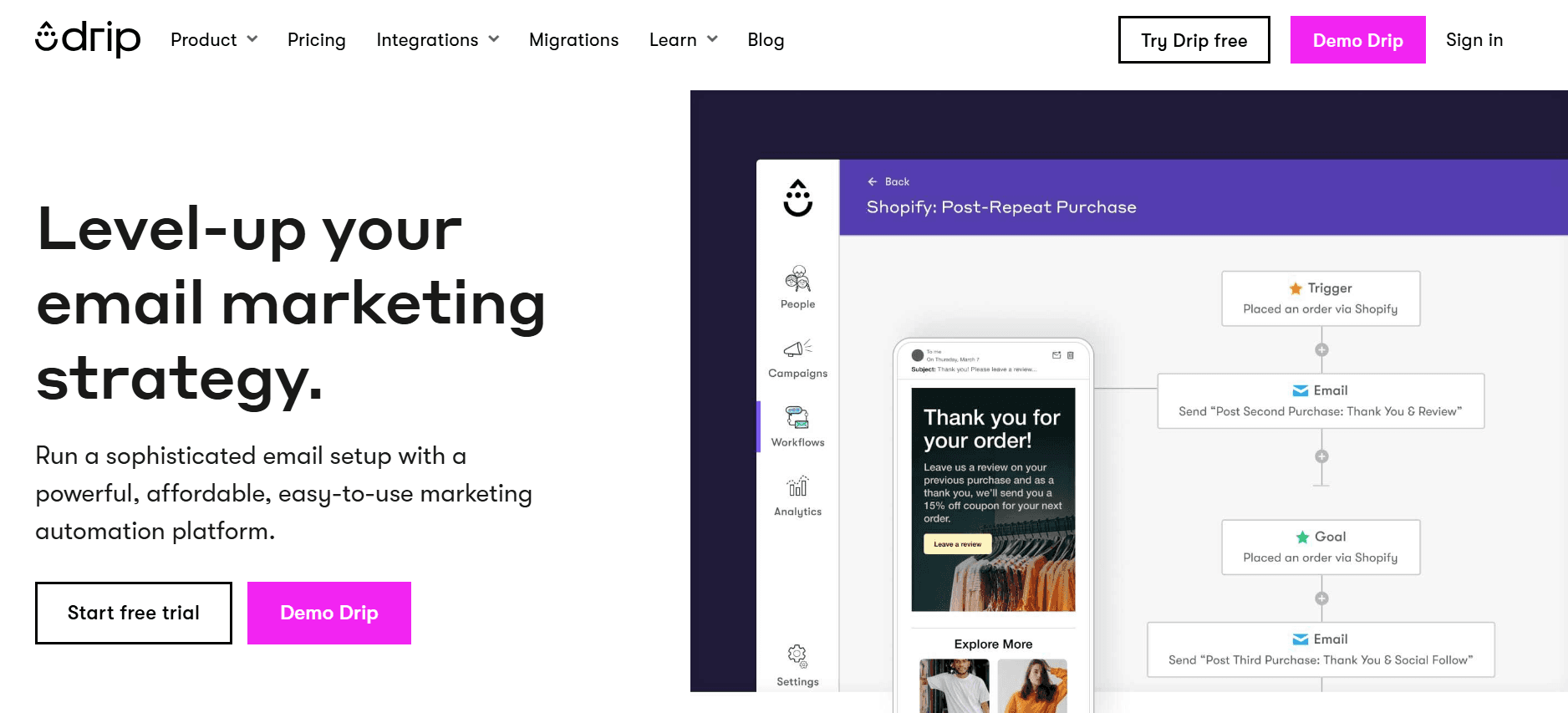
Best for:
E-commerce businesses and marketing campaign managers who want to use email marketing automation for cold and warm leads.
Drip is a marketing automation platform that helps grow:
e-commerce brands
Drive repeat purchases and increase conversion rates by creating dynamic segments that engage customers with single emails or automated campaigns.
8. Hubspot: The Best Cold Email Tool for Teams
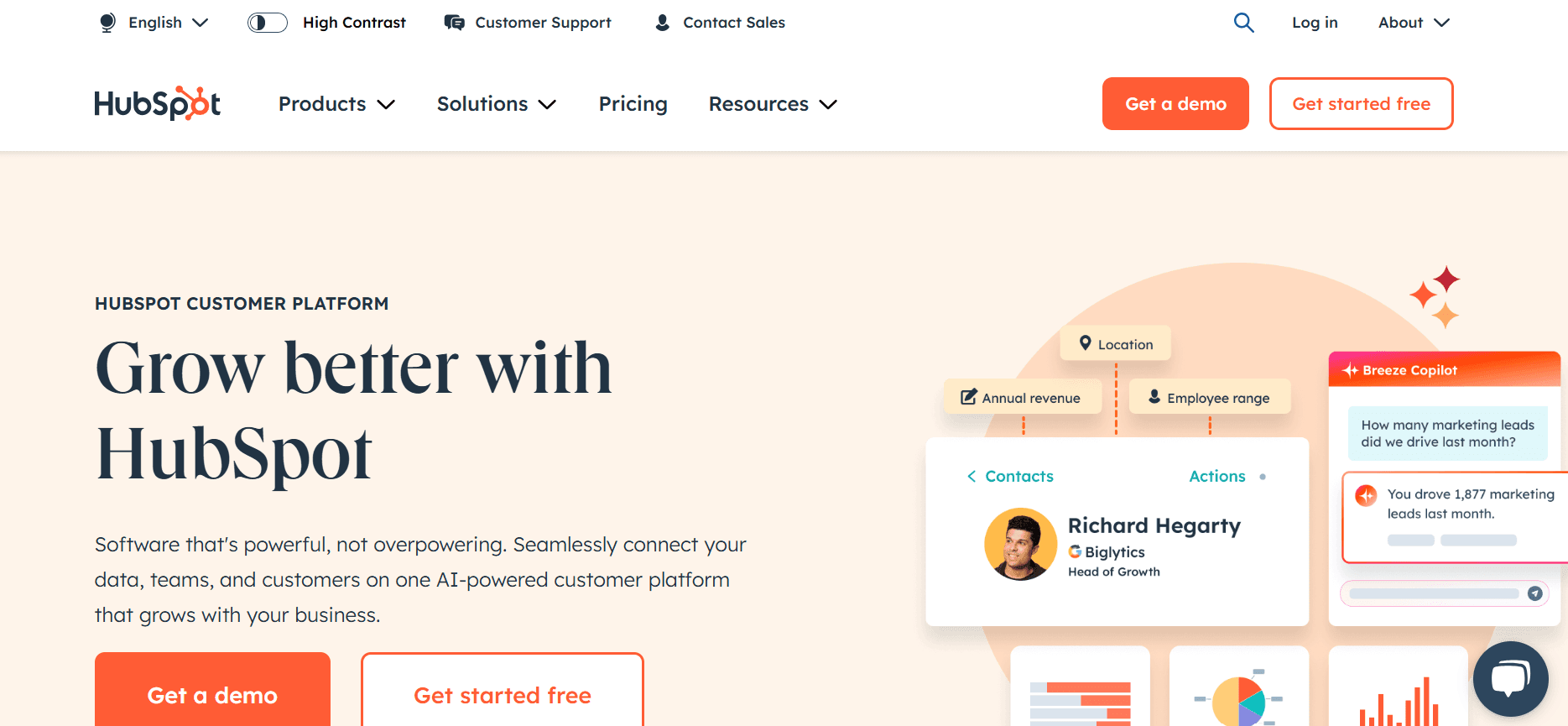
Best for:
Sales and marketer teams that want to collaborate on the same platform.
HubSpot is a feature-rich marketing automation platform that offers a variety of tools to help businesses grow and engage with their audience. While HubSpot primarily focuses on inbound marketing, it also provides features that can be used for cold email campaigns.
9. Woodpecker: The Best Cold Email Tool for Personalization
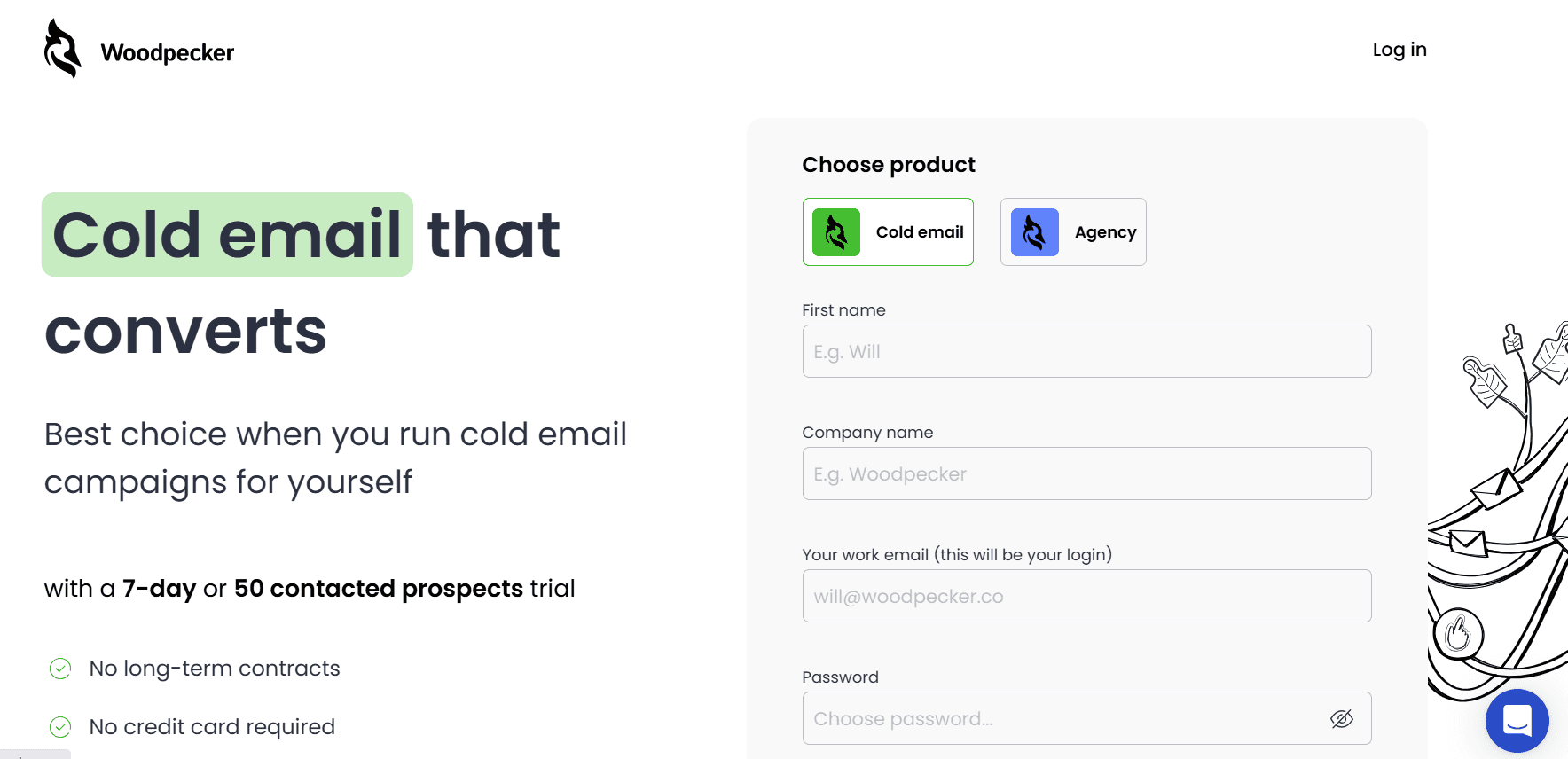
Best for:
Salespeople from SMBs that want to personalize and automate cold outreach. Woodpecker is an automated cold email software that simplifies and optimizes outreach campaigns. With its intelligent follow-up system and personalized email automation, Woodpecker helps you reach more prospects and increase response rates. The tool integrates well with Gmail and Outlook.
10. Reply.io: The Best Cold Email Software for Sales Teams
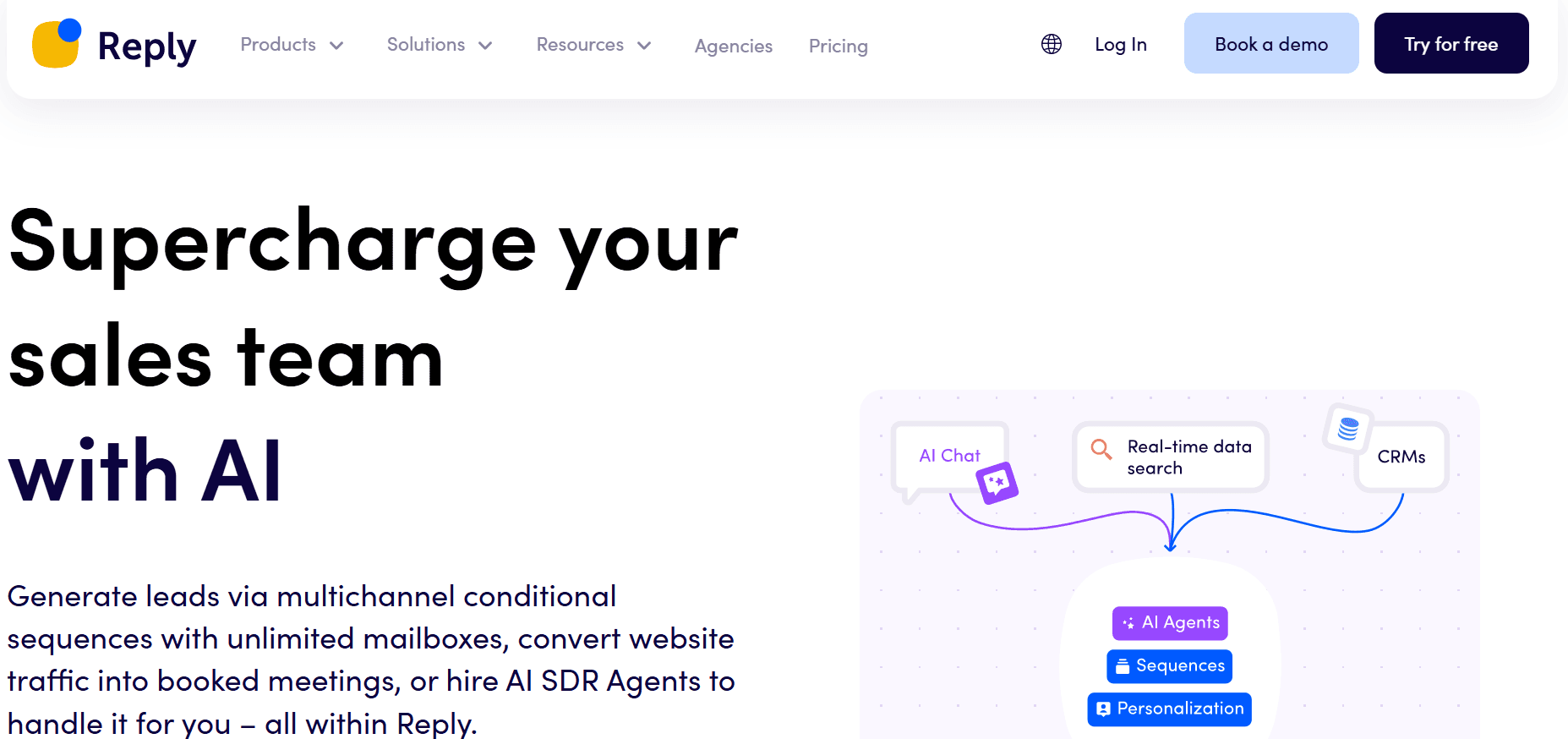
Best for:
Sales and marketing professionals working for SMBs involved in outbound sales and email outreach.
Reply.io is the AI-first sales engagement platform that helps SDR teams find new prospects, engage them through multiple channels, and create new opportunities at scale while keeping every touchpoint personal.
11. Instantly: The Best Cold Email Tool for Personalization
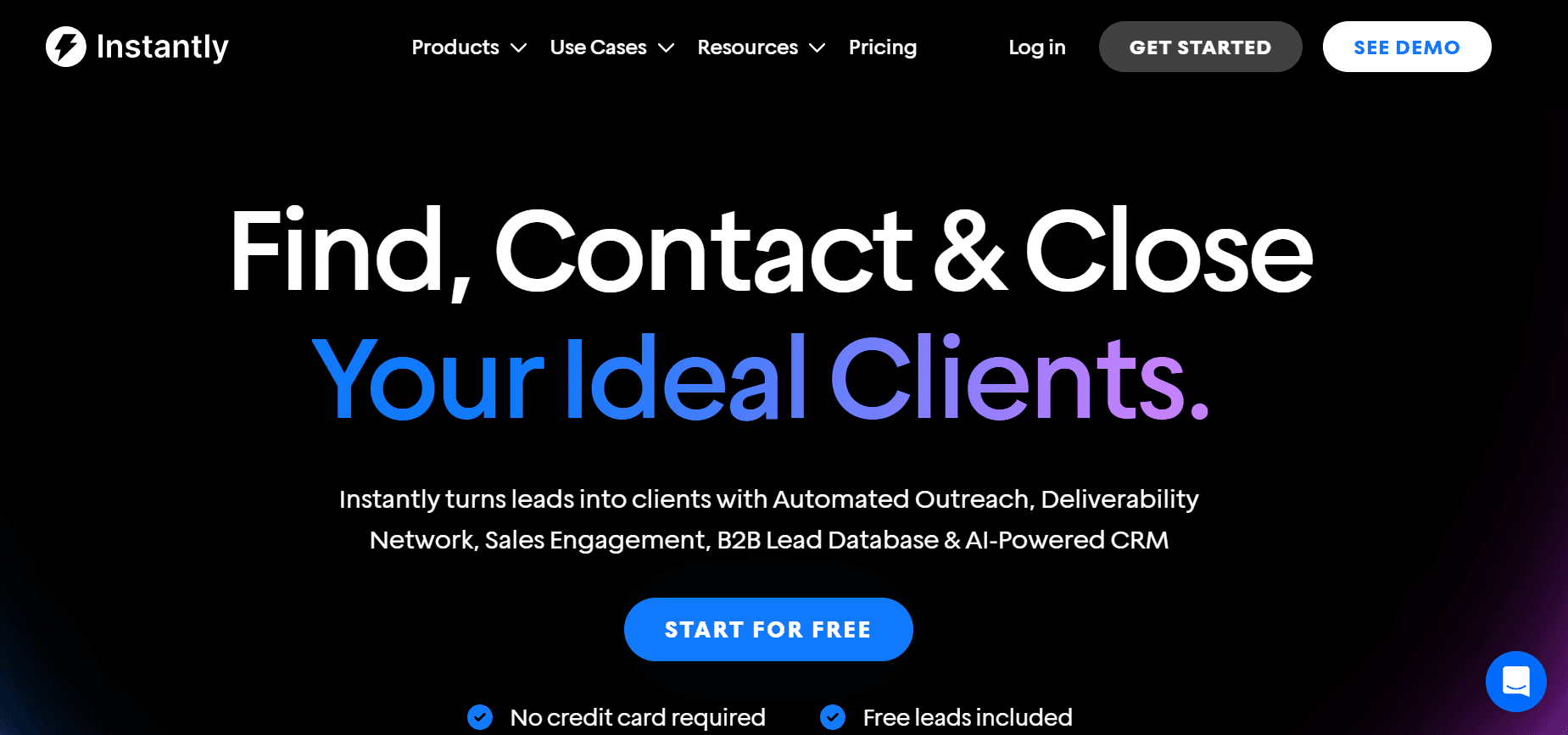
Best for:
Sales and marketing teams working in small biz looking for personalized cold email outreach and follow-ups. Instantly is an email outreach platform that helps businesses send personalized and automated cold emails to prospects and leads. They help you find the best leads, create campaigns, and automate workflows using AI.
12. Customer.io: The Best Targeted Cold Email Software
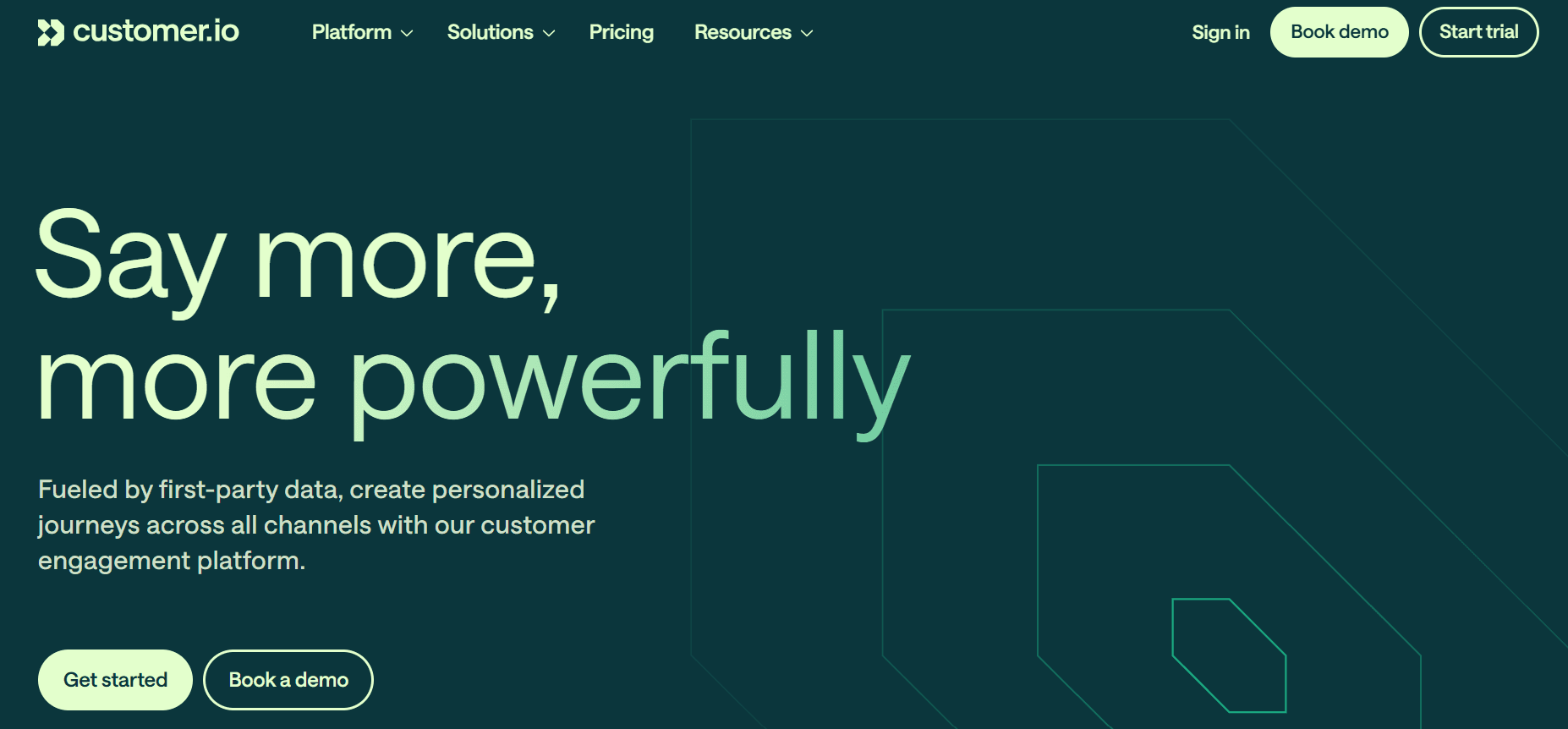
Best for: Businesses aiming to send behavior-based, targeted cold emails for customer engagement. Customer.io is a customer engagement platform designed for marketing teams to create data-driven campaigns that reach people across all messaging channels. They have Journeys for messaging automation and Data Pipelines, a customer data platform connecting the entire stack.
13. Overloop: The Best Cold Email Tool for Multi-Channel Campaigns
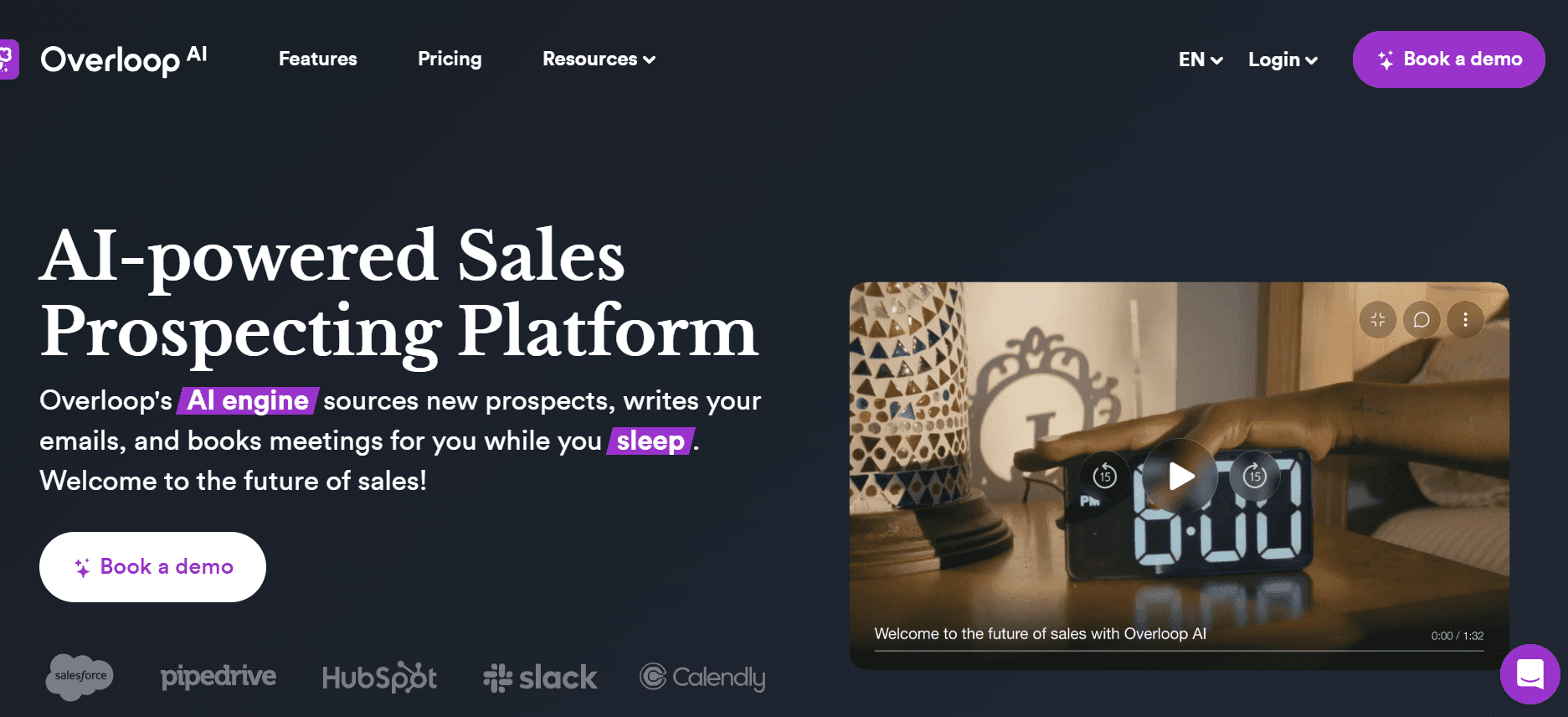
Best for:
Sales teams (SMBs) looking for a platform to run multi-channel outbound campaigns.
Overloop is an email outreach and engagement platform for sales teams. It offers email:
Tracking
Templates
Analytics.
Users can create ultra-personalized campaigns and mix cold emails, LinkedIn automation, and phone calls. Overloop also supports link-building activities. The product can be handy for agencies running campaigns for their customers
14. Lemlist: The Best Cold Email Software for Creative Campaigns
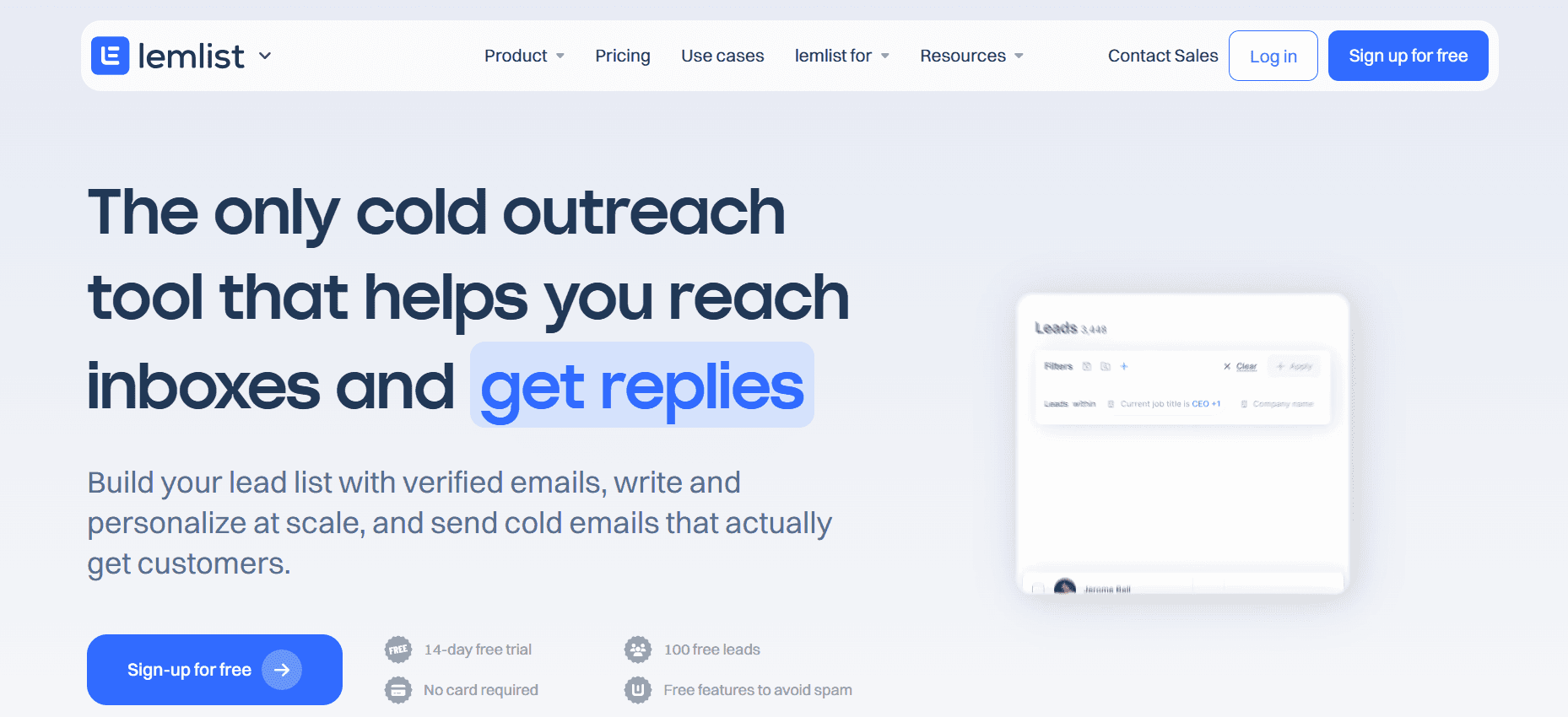
Best for:
Sales and marketing professionals in SMB seeking a tool for personalized, creative cold email campaigns. Lemlist is an advanced AI-powered sales engagement platform. It’s all-in-one:
Offering prospect lists with details
Discovering valid emails
Organizing personalized multichannel campaigns.
Emails in Lemlist can have custom intro lines, images, and dynamic landing pages.
15. QuickMail: The Best Cold Email Tool for Small Business
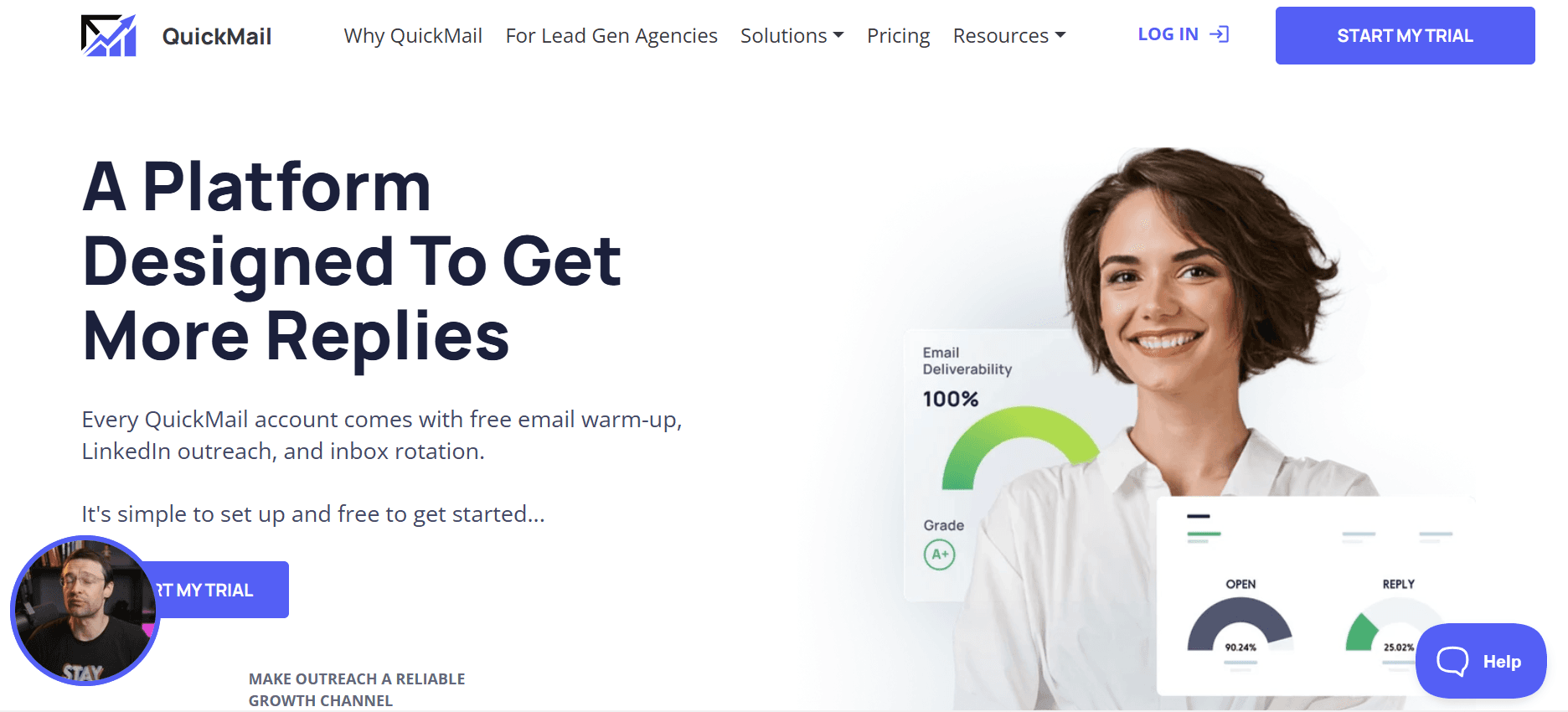
Best for:
Small to mid-sized businesses aiming to simplify cold email outreach and follow-ups. They also have options for agencies.
QuickMail is an email automation platform designed to help businesses send cold emails and follow-ups more efficiently. It’s designed to build a predictable sales pipeline by reaching out to cold prospects by email. It has what most of the best sales tools have:
A follow-up option
Custom tags
Email deliverability reports
16. Constant Contact: The Best Cold Email Tool for Beginners
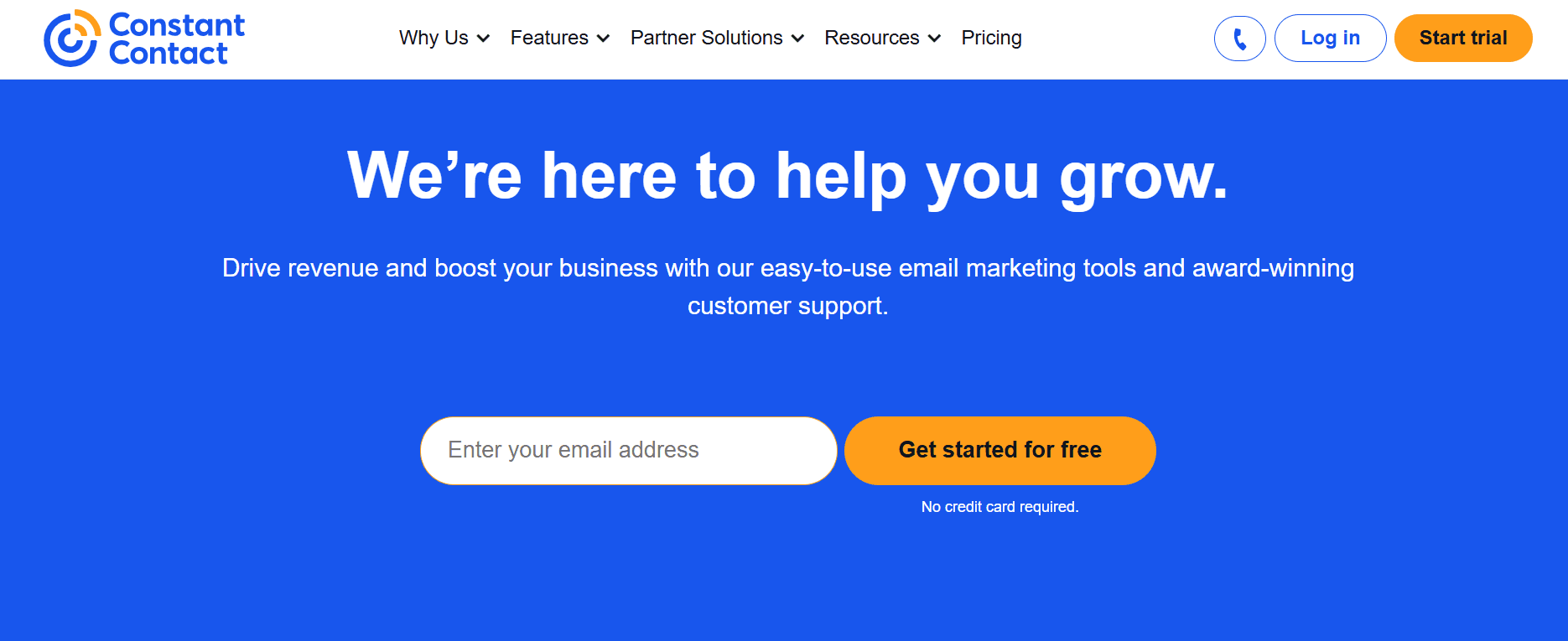
Best for:
Small businesses
Nonprofits
Individuals looking for an easy-to-use email marketing and marketing automation platform.
They also offer Lead gen & CRM. Constant Contact is an email marketing and marketing automation platform that simplifies:
Creating
Sending
Trackingracking
It offers various tools to help businesses engage with their audience through email. Constant Contact is a better option for smaller campaigns targeted at generic audiences.
17. InsideSales (formerly Xant): Best for Large Businesses with Advanced Needs
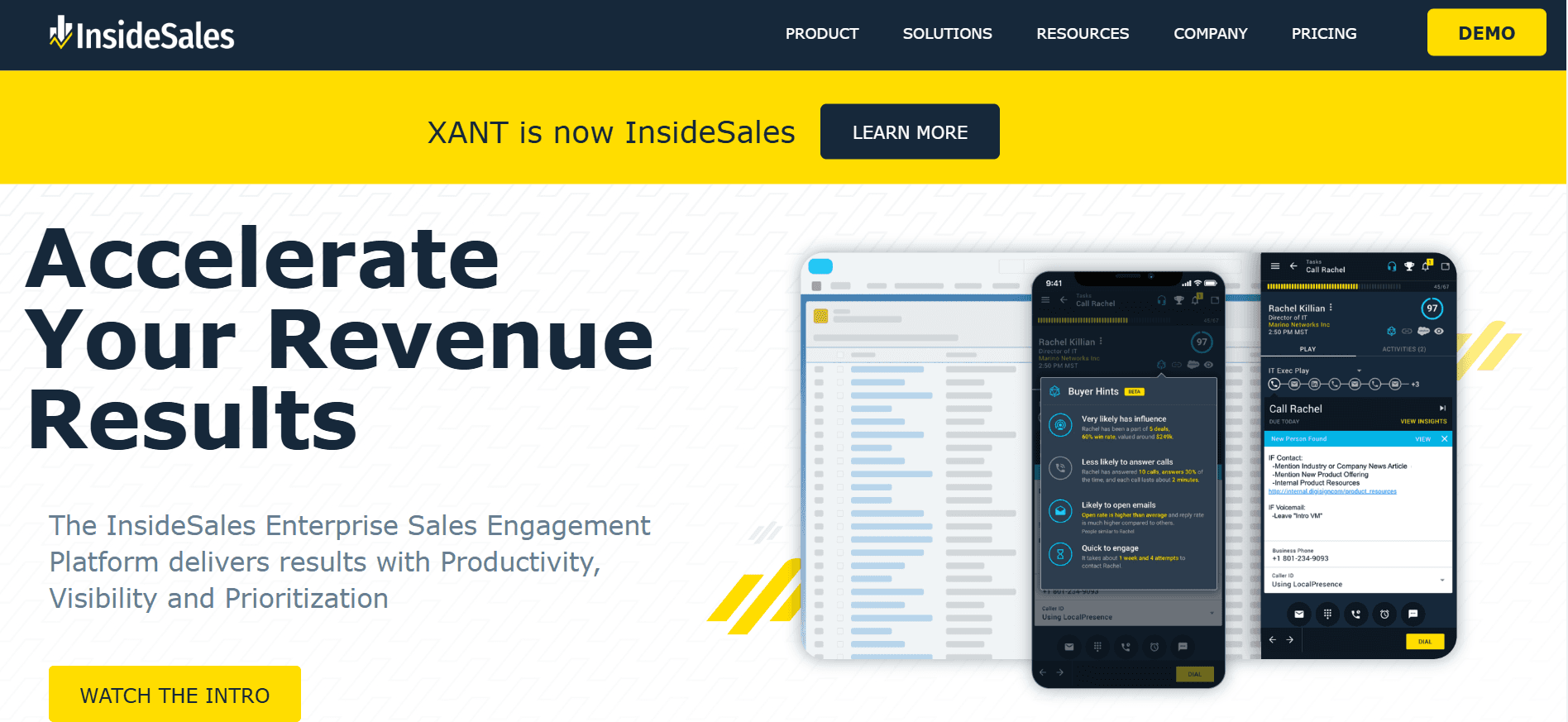
Best for:
Businesses operating in the mid-market and enterprise, and their sales teams, seek an advanced sales engagement platform for outreach and lead management.
InsideSales offers Playbook, an enterprise-level sales engagement platform rather than a cold emailing tool. With Playbook, salespeople can increase;
Productivity
Optimize customer interactions
Connect to the right buyers
They have sales engagement tools, including:
email outreach
Lead scoring
Predictive analytics
18. Yesware: The Best Cold Email Tool for Tracking
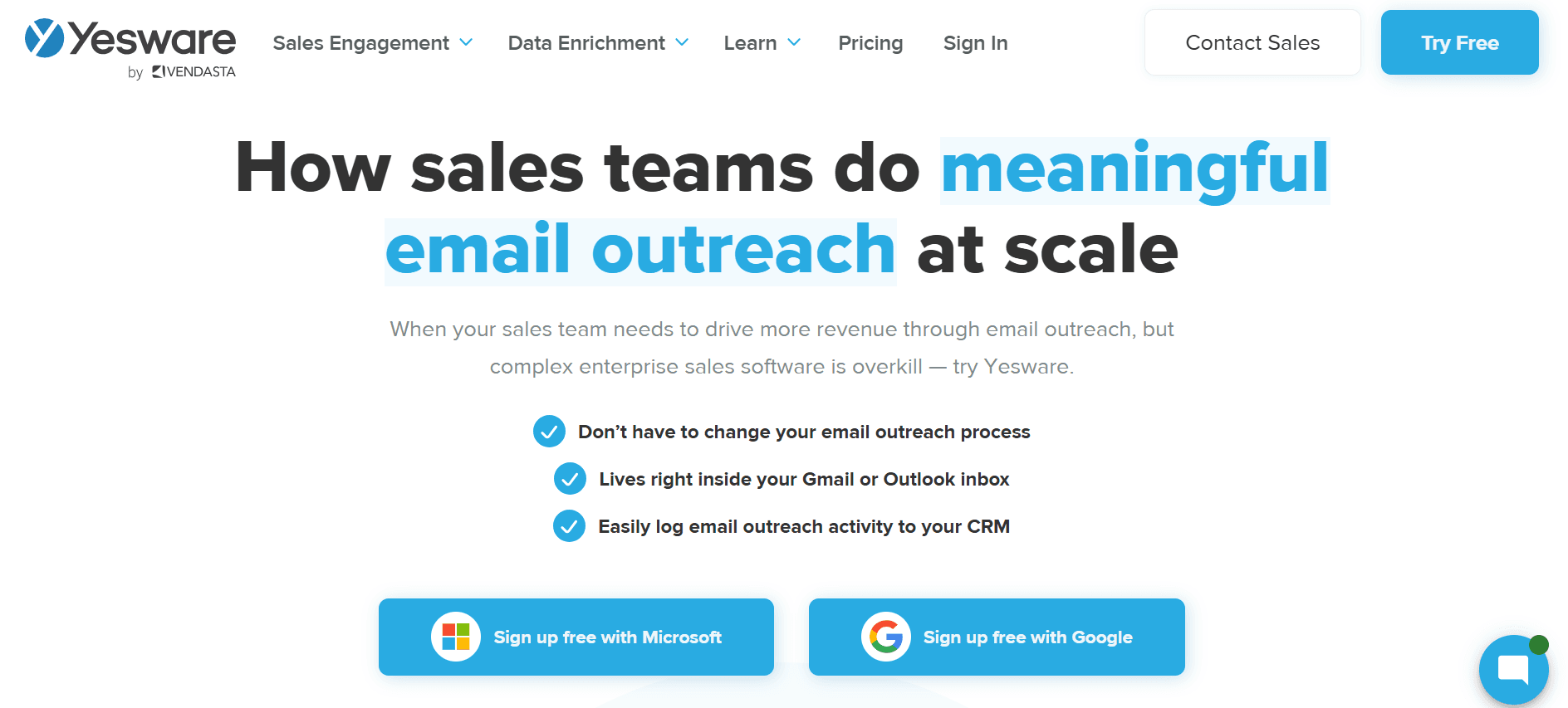
Best for:
Sales and marketing professionals looking for advanced email outreach:
Email tracking
Analytics
Templating
It’s for small and mid-sized businesses.
Yesware is an email productivity and analytics tool that integrates with popular email platforms. Suppose your team wants to drive more revenue through email outreach without complex enterprise-level software. In that case, the tool can be helpful. Yesware will help your sales team build a better pipeline and increase conversions.
19. Streak: The Best Cold Email Tool for Gmail Users
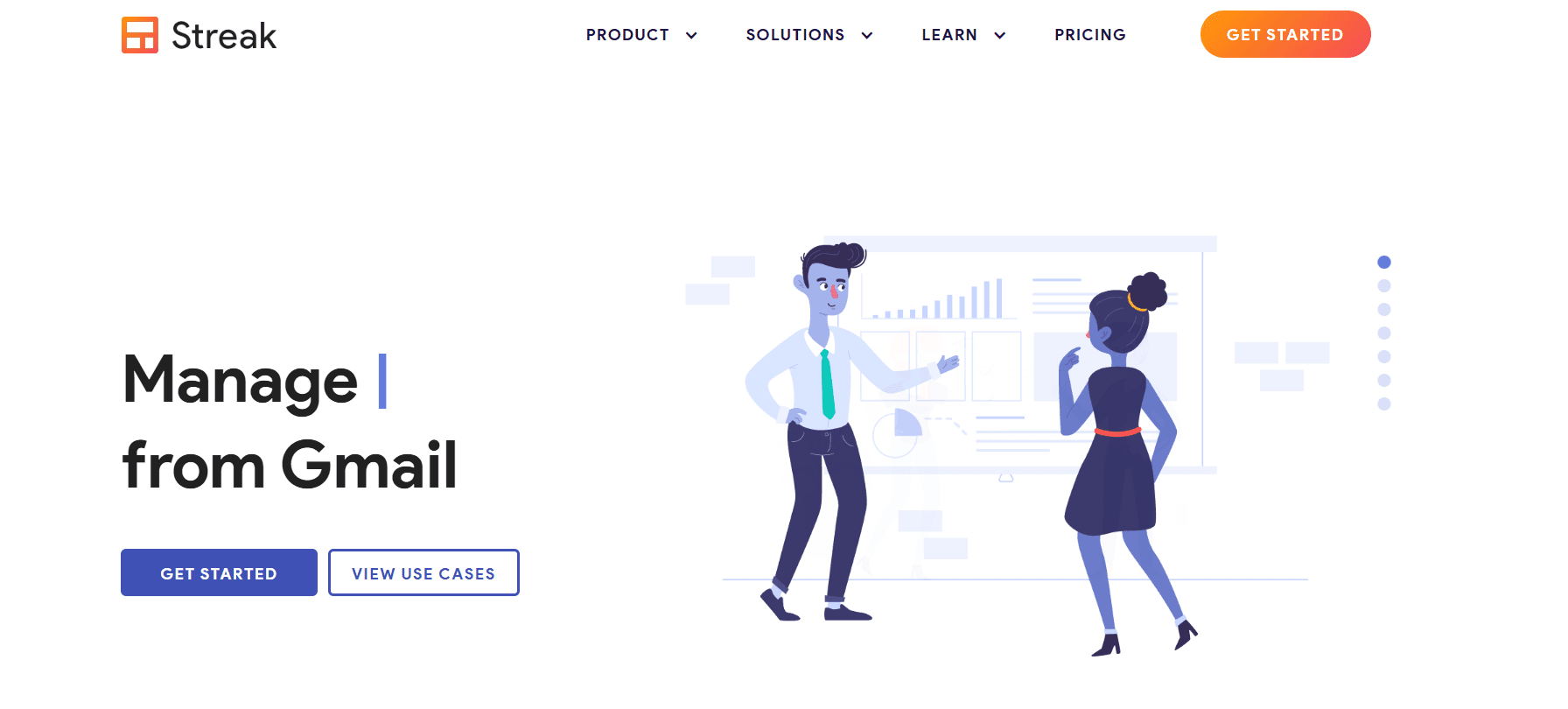
Best for:
Gmail users and small businesses looking for a CRM with email tracking and integration.
Streak is more of a CRM tool rather than cold emailing. It integrates directly with Gmail and offers email tracking and pipeline management. Sales teams can manage workflows inside Gmail, including:
Sales
Customer support
Hiring
Projects. The tool makes collaboration easier by automatically sharing:
Emails,
Notes
Call logs
20. GMass: The Best Tool for Warming Up Your Email Account
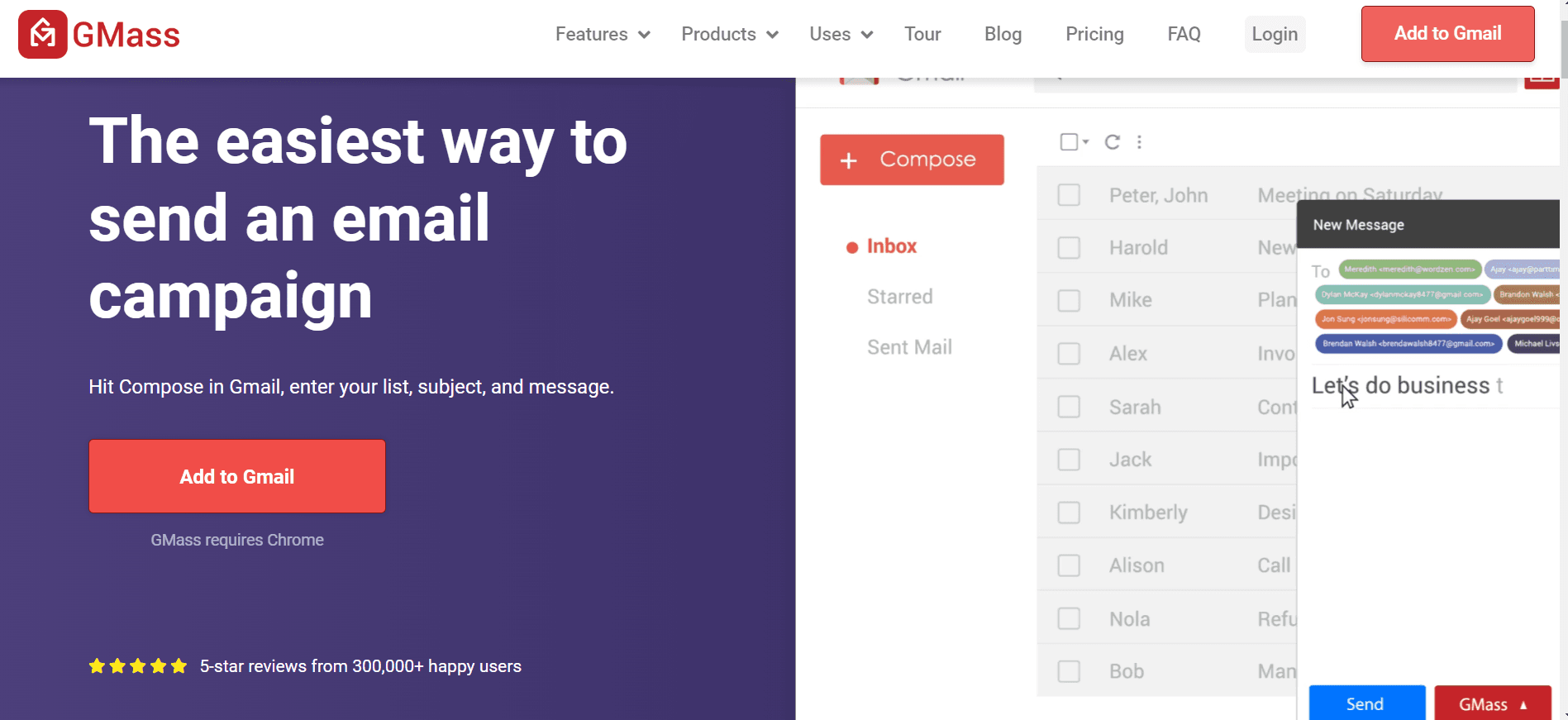
GMass is a tool for sending email campaigns inside Gmail. It helps warm up your email accounts, preparing them for successful cold outreach campaigns. GMass helps you avoid triggering spam filters or flagging your emails by gradually increasing the number of emails sent over time.
This way, you can establish a positive sender reputation and increase deliverability rates, ensuring your cold emails reach the intended recipients. Only some cold email tools have an email warmup feature, so GMass might be a great addition to your cold email strategy.
21. Apollo: The Best Cold Email Prospecting Tool
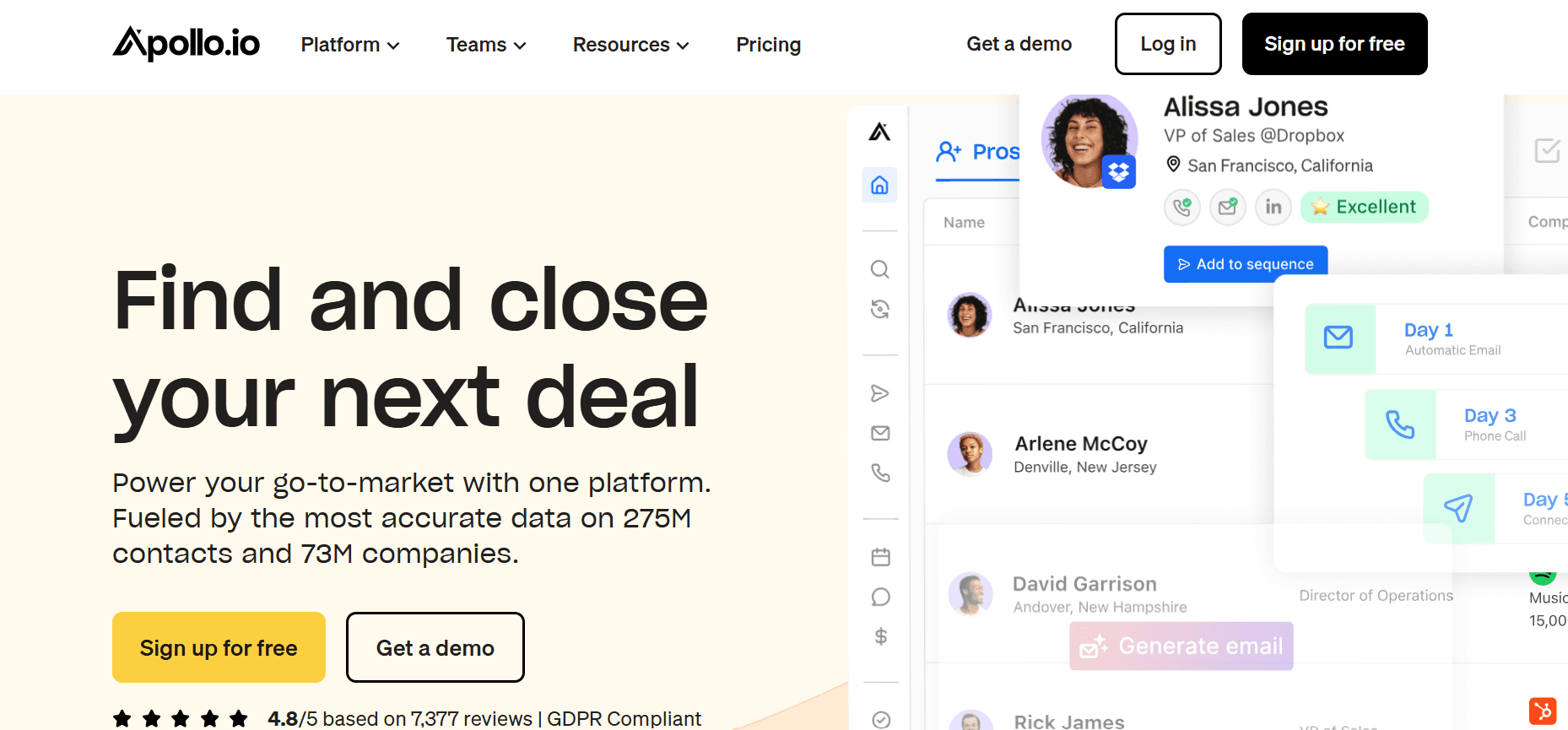
If you want to enrich your lead list, Apollo might be useful. It offers a comprehensive B2B database that helps you identify and target the right contacts. With its vast collection of company profiles and contact information, you can find potential leads based on various criteria such as:
Industry
Location
Company size
Its pricing is affordable for small and mid-sized businesses.
22. Seamless: The AI Cold Email Prospecting Tool

Seamless is an AI-powered prospecting tool that can improve your cold email strategy. It analyzes vast amounts of data to help you identify and prioritize the most promising leads, and its data quality is superior to that of its competitors. Its advanced algorithms can detect patterns and predict which prospects are more likely to engage with your emails. With such insights, you can craft cold emails that resonate even more with your audience.
23. Hunter: The Best Tool for Finding Email Addresses
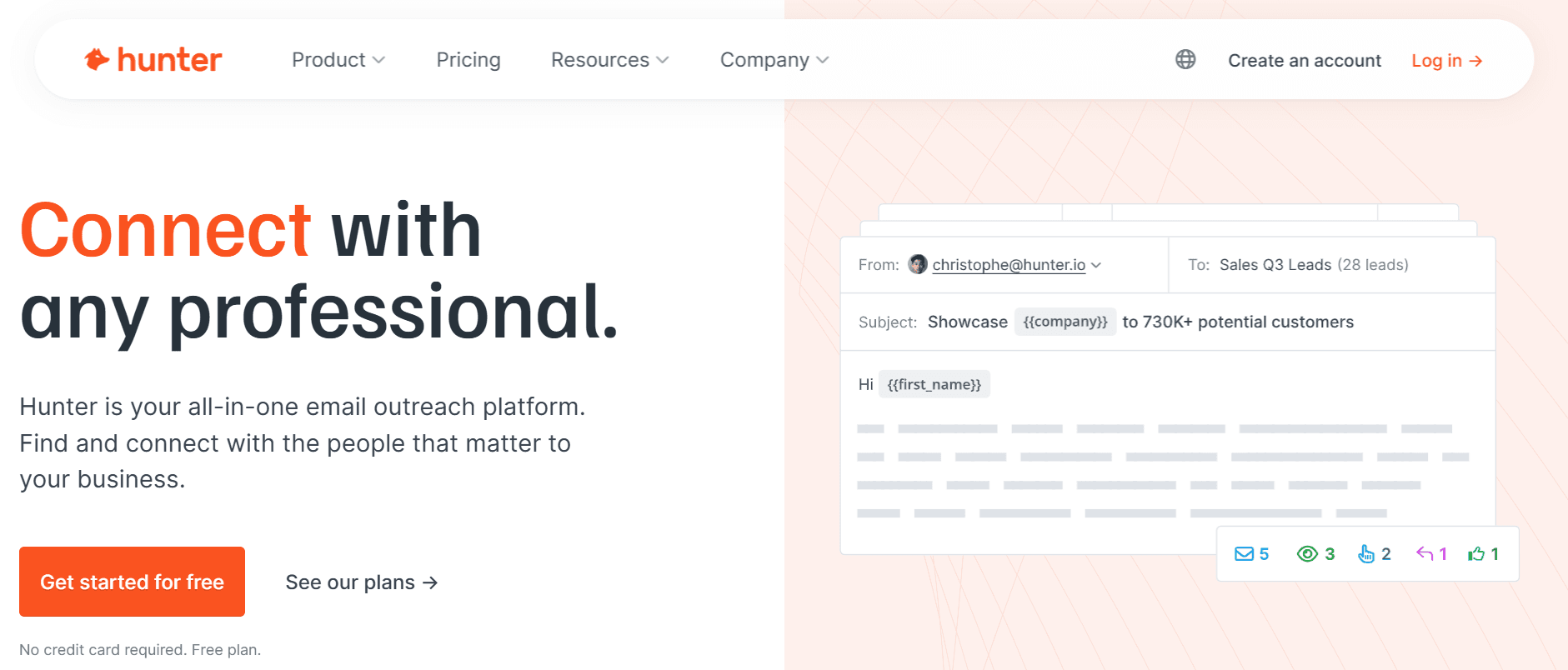
Hunter is a great tool for finding the email addresses of potential leads or contacts. By simply entering a company's domain name, Hunter searches the web for email addresses associated with that domain. This makes reaching out to specific individuals within an organization easier and lets you personalize those cold emails a bit better.
It’s simple—by having more accurate contact information at your fingertips, you can improve the effectiveness of your cold email outreach. The tool’s pricing is suitable for small and mid-sized businesses. It offers good support, and, rarely, the tool can’t find the contact.
24. Dealfront (previously Leadfeeder): The Best Tool for Identifying Website Visitors
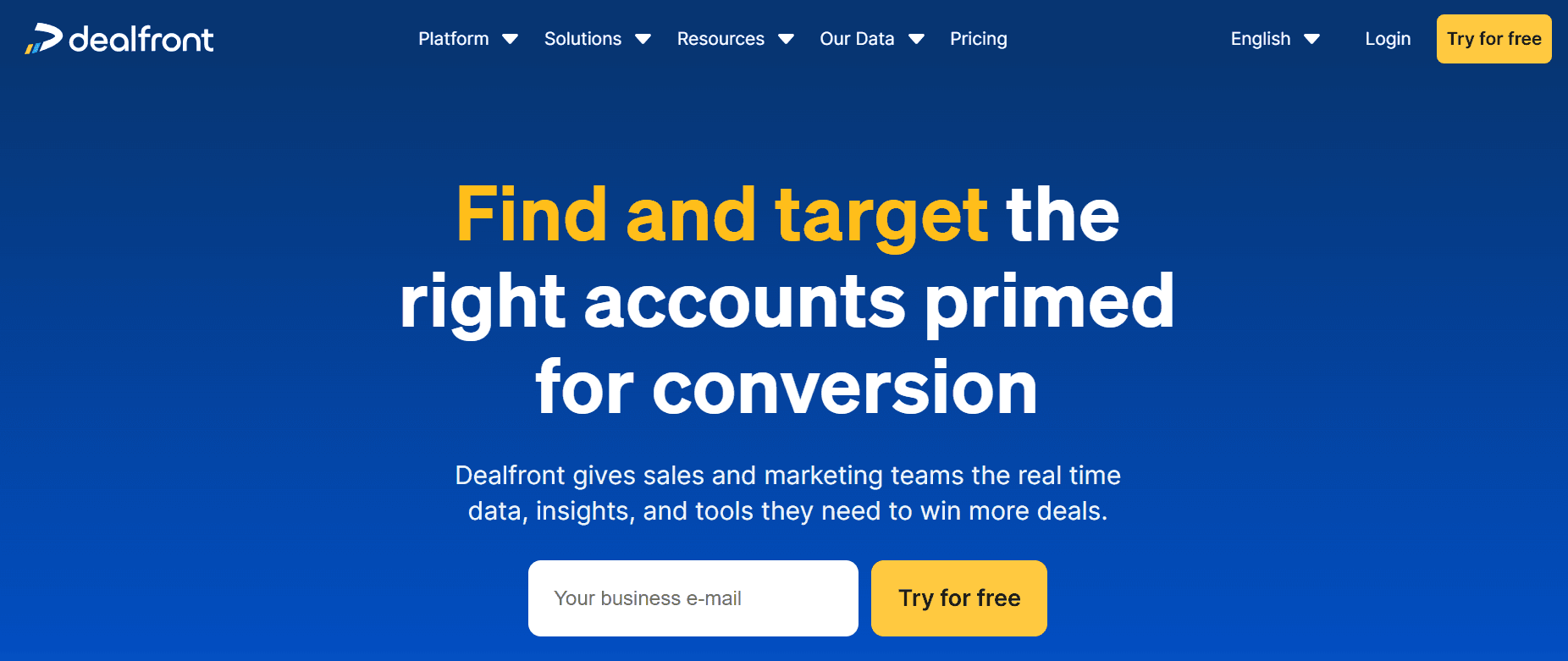
Dealfront (previously Leadfeeder) is a tool for turning website visitors into potential leads. By integrating with your website analytics, Dealfront identifies the companies that visit your site and provides you with valuable information about their browsing behavior. It lets you prioritize warm leads and tailor your cold email approach based on their interests and needs.
Using the tool can significantly boost the efficiency and effectiveness of your cold email outreach. It's mostly suitable for smaller businesses and has straightforward pricing plans. Sometimes, the tool can face challenges when integrating with other software.
25. SavvyCal: The Best Cold Email Tool for Scheduling
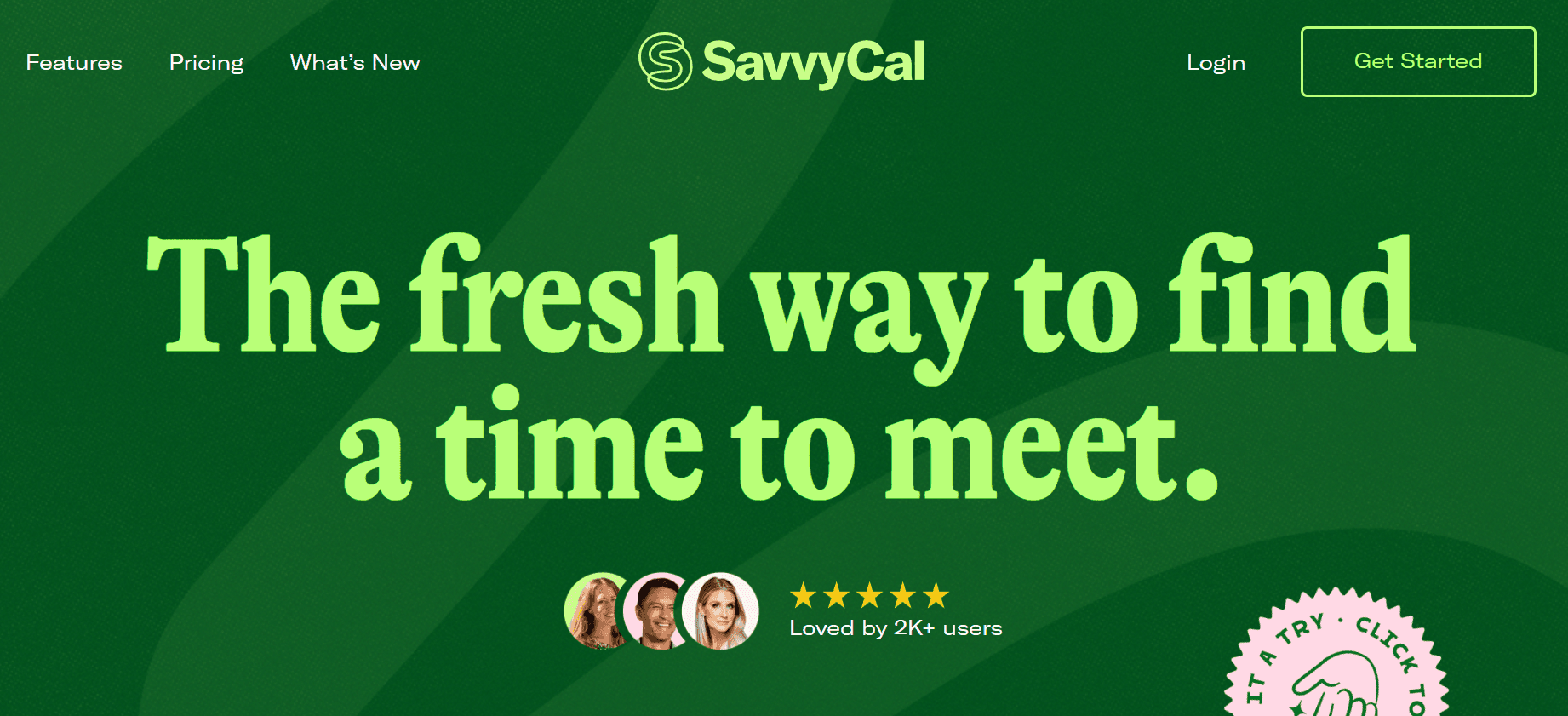
SavvyCal is a great addition to your cold outreach activities. It allows your prospects to schedule calls directly via those cold emails. It has a user-friendly interface, and recipients can easily choose a suitable time slot, eliminating the need for back-and-forth coordination.
SavvyCal has a powerful integration with Close, making the scheduling experience smoother. Those leads can automatically land in your CRM. The tool is easy to configure, and users usually have no specific complaints.
26. Snov.io: The Best Cold Email Verification Tool
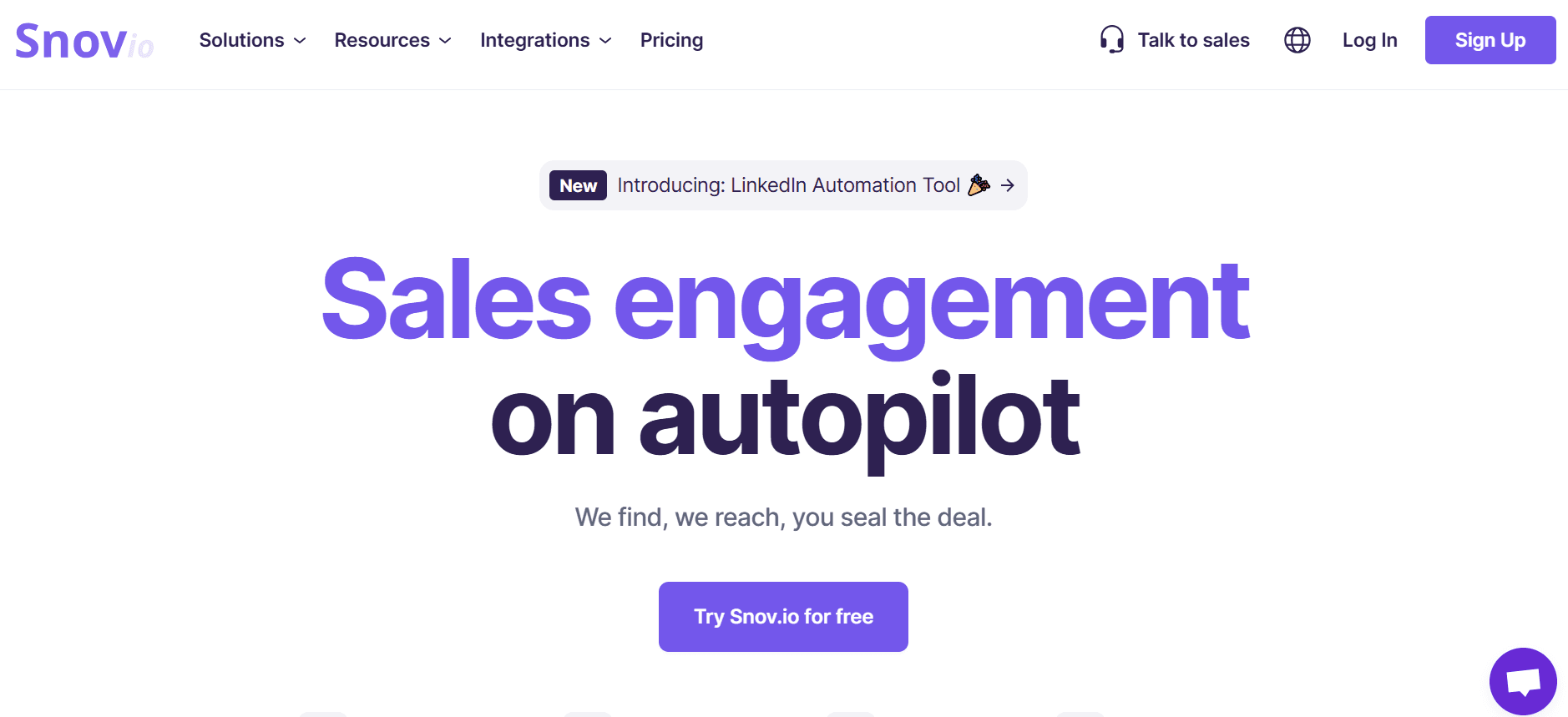
This cold emailing tool verifies your emails but does so in bulk. You need to import the list. This means they’re not checked in real time. Snov.io doesn’t offer an email/domain warm-up feature, so you must handle the process manually. Snov.io offers some email automation features.
It offers A/B testing, but it’s only available for users starting with an M plan. So, if you have an S plan or freemium, you won’t be able to A/B test your emails to find the best-performing version for your email campaign. You can add conditions to your campaigns based on prospect behavior. You can also send personalized cold email campaigns by using custom fields.
27. Klenty: The Best Cold Email Tool for Personalization and Testing
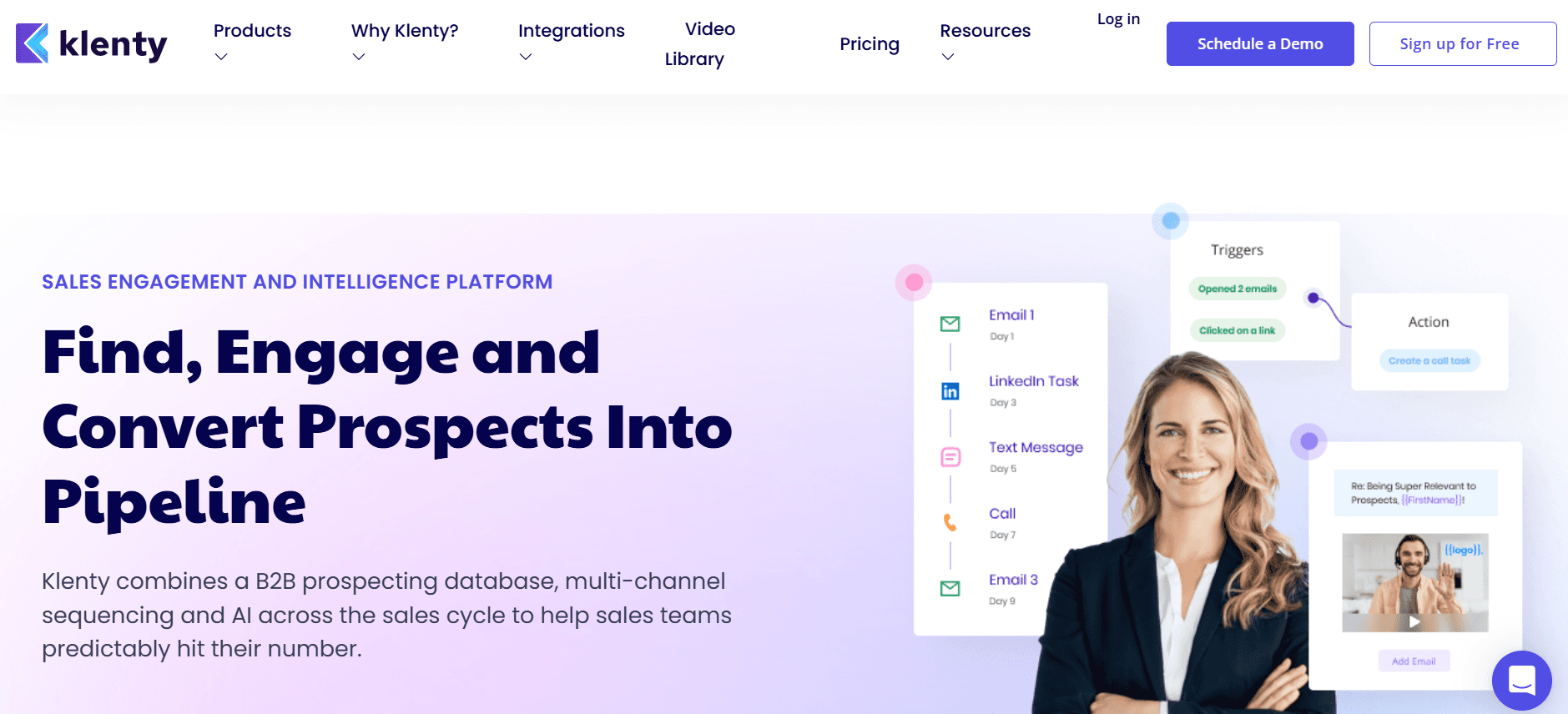
Klenty’s Liquid Templates can help you personalize your emails, and you can also record and add videos to your messages (if you integrate Klenty with Hippo Video). This cold email software also allows you to use A/B testing to see which template in a running campaign gets a better response rate. Klenty is natively integrated with tools such as:
Pipedrive
Zoho CRM
Hubspot
Salesforce
Slack

Related Reading
• Sendgrid Alternatives
• Amazon SES Alternatives
• Mailgun Alternatives
• Maildoso Alternatives
• Mailreef
• Cold Email Marketing Services
• Cold Email Services
• Lemlist vs Instantly
• Smartlead vs Instantly
Start Buying Domains Now and Setup Your Email Infrastructure Today
At Inframail, we are revolutionizing cold email infrastructure with unlimited inboxes at a flat rate.
We provide:
Microsoft-backed deliverability
Dedicated IP addresses
Automated technical setup
This helps customer outreach efforts efficiently like:
Agencies
Recruiters
SDRs
The main benefits of using our service:
Automated SPF, DKIM, and DMARC setup
Dedicated email servers for each user
16-hour priority support daily
Unlike traditional providers that charge per inbox and leave you wrestling with technical configurations, Inframail streamlines the entire process. We handle the complex infrastructure setup while you focus on reaching more prospects.
InfraMail provides the robust email infrastructure you need without the usual technical headaches and per-inbox costs, whether you're:
An agency looking to scale outreach
A recruiter connecting with candidates
An SDR driving sales
Start buying domains now and set up your email infrastructure today with our email infrastructure tool.


